

What Is a Gravitational Wave?
A gravitational wave is an invisible (yet incredibly fast) ripple in space.
We’ve known about gravitational waves for a long time. More than 100 years ago, a great scientist named Albert Einstein came up with many ideas about gravity and space.

Albert Einstein, official 1921 Nobel Prize in Physics photograph.
Einstein predicted that something special happens when two bodies—such as planets or stars—orbit each other. He believed that this kind of movement could cause ripples in space. These ripples would spread out like the ripples in a pond when a stone is tossed in. Scientists call these ripples of space gravitational waves .
Gravitational waves are invisible. However, they are incredibly fast. They travel at the speed of light (186,000 miles per second). Gravitational waves squeeze and stretch anything in their path as they pass by.

Illustration of how mass bends space. Credit: NASA
What causes gravitational waves?
- when a star explodes asymmetrically (called a supernova )
- when two big stars orbit each other
- when two black holes orbit each other and merge
An artist’s animation of gravitational waves created by the merger of two black holes. Credit: LIGO/T. Pyle
But these types of objects that create gravitational waves are far away. And sometimes, these events only cause small, weak gravitational waves. The waves are then very weak by the time they reach Earth. This makes gravitational waves hard to detect.
How do we know that gravitational waves exist?
In 2015, scientists detected gravitational waves for the very first time. They used a very sensitive instrument called LIGO (Laser Interferometer Gravitational-Wave Observatory). These first gravitational waves happened when two black holes crashed into one another. The collision happened 1.3 billion years ago. But, the ripples didn’t make it to Earth until 2015!

LIGO is made up of two observatories: one in Louisiana and one in Washington (above). Each observatory has two long “arms” that are each more than 2 miles (4 kilometers) long. Credit: Caltech/MIT/LIGO Lab
Einstein was right!
The first detection of gravitational waves was a very important event in science. Before this, just about everything we knew about the universe came from studying waves of light. Now we have a new way to learn about the universe—by studying waves of gravity.
Gravitational waves will help us learn many new things about our universe. We may also learn more about gravity itself!
How are gravitational waves detected?
When a gravitational wave passes by Earth, it squeezes and stretches space. LIGO can detect this squeezing and stretching. Each LIGO observatory has two “arms” that are each more than 2 miles (4 kilometers) long. A passing gravitational wave causes the length of the arms to change slightly. The observatory uses lasers, mirrors, and extremely sensitive instruments to detect these tiny changes.
Watch the animation below to see how this works!
Related Resources for Educators
Modeling Gravitational Waves Dropping In With Gravitational Waves
More about space!

What is a black hole?

What is the Big Bang?

What is a galaxy?
If you liked this, you may like:
It’s a wonderful world — and universe — out there.
Come explore with us!
Science News Explores
Explainer: understanding waves and wavelengths.
Waves transfer energy, not matter, from one place to another

The swells of water in the ocean, the sunlight shining down and the sound of the crashing water ⎯ all are types of waves.
JNEphotos/iStock/Getty Images Plus
Share this:
- Google Classroom
By Jennifer Look
March 5, 2020 at 6:40 am
Waves appear in many different forms. Seismic waves shake the ground during earthquakes. Light waves travel across the universe, allowing us to see distant stars. And every sound we hear is a wave. So what do all these different waves have in common?
A wave is a disturbance that moves energy from one place to another. Only energy — not matter — is transferred as a wave moves.
The substance that a wave moves through is called the medium . That medium moves back and forth repeatedly, returning to its original position. But the wave travels along the medium. It does not stay in one place.
Imagine holding one end of a piece of rope. If you shake it up and down, you create a wave, with the rope as your medium. When your hand moves up, you create a high point, or crest. As your hand moves down, you create a low point, or trough (TRAWF). The piece of rope touching your hand doesn’t move away from your hand. But the crests and troughs do move away from your hand as the wave travels along the rope.
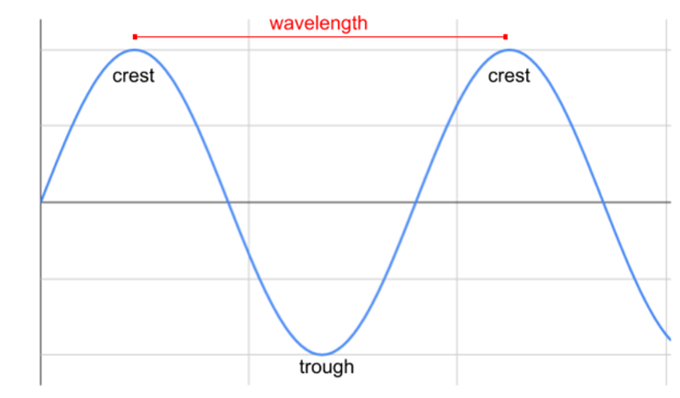
The same thing happens in other waves. If you jump in a puddle, your foot pushes on the water in one spot. This starts a small wave. The water that your foot hits moves outward, pushing on the water nearby. This movement creates empty space near your foot, pulling water back inwards. The water oscillates, moving back and forth, creating crests and troughs. The wave then ripples across the puddle. The water that splashes at the edge is a different bit of water than where your foot made contact. The energy from your jump moved across the puddle, but the matter (the molecules of water) only rocked back and forth.
Light, or electromagnetic radiation, also can be described as a wave. The energy of light travels through a medium called an electromagnetic field. This field exists everywhere in the universe. It oscillates when energy disturbs it, just like the rope moves up and down as someone shakes it. Unlike a wave in water or a sound wave in air, light waves don’t need a physical substance to travel through. They can cross empty space because their medium does not involve physical matter.
Scientists use several properties to measure and describe all these types of waves. Wavelength is the distance from one point on a wave to an identical point on the next, such as from crest to crest or from trough to trough. Waves can come in a wide range of lengths. The wavelength for an ocean wave might be around 120 meters (394 feet). But a typical microwave oven generates waves just 0.12 meter (5 inches) long. Visible light and some other types of electromagnetic radiation have far tinier wavelengths.
Frequency describes how many waves pass one point during one second. The units for frequency are hertz . Traveling through the air, a music note with a frequency of 261.6 hertz (middle C) pushes air molecules back and forth 261.6 times every second.
Frequency and wavelength are related to the amount of energy a wave has. For example, when making waves on a rope, it takes more energy to make a higher frequency wave. Moving your hand up and down 10 times per second (10 hertz) requires more energy than moving your hand only once per second (1 hertz). And those 10 hertz waves on the rope have a shorter wavelength than ones at 1 hertz.
Many researchers rely on the properties and behavior of waves for their work. That includes astronomers, geologists and sound engineers. For example, scientists can use tools that capture reflected sound, light or radio waves to map places or objects.
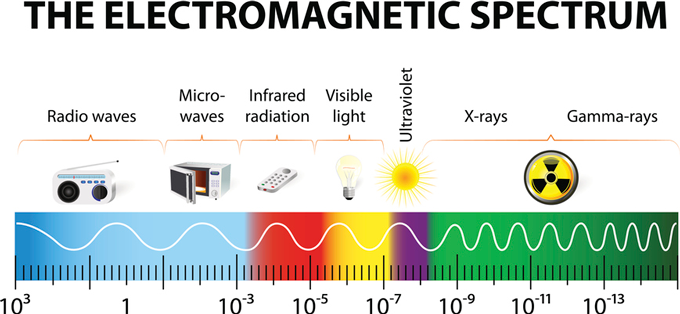
More Stories from Science News Explores on Physics

Science reveals the reasons behind painful paper cuts

Scientists Say: Kugelblitz

Experiment: Making music with bottles

Scientists Say: Magnetosphere

Scientists Say: Cosmic rays

The periodic table might soon have a new element

Lasers help put the cork on spilled oil

Scientists Say: Goldene

How do gravitational waves work?

Paul M. Sutter is an astrophysicist at SUNY Stony Brook and the Flatiron Institute, host of " Ask a Spaceman " and " Space Radio ," and author of " How to Die in Space ." Sutter contributed this article to Space.com's Expert Voices: Op-Ed & Insights .
Gravity isn't just a force that keeps things glued together. Through our understanding of general relativity, we know that gravity can make gravitational waves, or ripples in the fabric of space-time.
But how do these gravitational waves work, exactly?
Shortly after formulating his general theory of relativity , Albert Einstein realized that gravity can make waves. However, he quickly doubted his own conclusions. The realization that gravitational waves exist came from a simplified form of general relativity, and Einstein didn't know if the waves were real or just an artifact of the simplification process.
Related : We could hunt gravitational waves on the moon if this wild idea takes off
The equations of general relativity are notoriously difficult to solve, so it's no surprise that even Einstein equivocated about this. It took several decades before physicists came to the firm conclusion that general relativity does support gravitational waves. In other words, they are indeed a real thing.
Pretty much anything in the universe doing anything at all makes gravitational waves. All it takes is a little wiggling, which gravitational waves have in common with pretty much any other wave. If you wiggle around in water, you make water waves. If your voice box wiggles around, it makes sound waves. If you wiggle an electron, you make electromagnetic waves. To make a gravitational wave, all you need to do is make mass accelerate.
Get the Space.com Newsletter
Breaking space news, the latest updates on rocket launches, skywatching events and more!
These waves travel outward from the source at the speed of light and are literal ripples in the force of gravity. When a gravitational wave passes through you, you get stretched and squeezed as if giant hands were playing with you like a piece of putty.
Did you feel that?
Even though pretty much everything in the universe is making gravitational waves all the time, you don't really notice them. Gravity is, by far, the weakest of the four fundamental forces of nature . Even if gravity were a billion billion billion times stronger than it is, it would still be orders of magnitude weaker than any of the other forces: the weak force , electromagnetism and the strong force . And gravitational waves are weaker still; they are tiny perturbations on top of the normal gravity.
This also means that the gravitational waves that you might make by, say, waving your arms around are almost entirely nonexistent. To make a serious dent in space-time, you need some serious mass and energy action — stuff like black hole collisions, neutron star smashups , supernovas, giant black holes that consume stars whole or even the chaotic forces unleashed in the earliest moments of the Big Bang .
If you were within about half a mile of two black holes merging , the gravitational waves emitted would be strong enough to tear you apart. But if you were hundreds of miles away, it wouldn't even make the hair on the back of your neck stand on end.
From our vantage point on Earth , millions or billions of light-years away from these cataclysmic events, the gravitational waves have an amplitude no bigger than the width of a proton.
Of course it was weird
The extreme weakness of gravitational waves is why it took nearly a quarter century of technological development to detect them. But in 2015, the Laser Interferometer Gravitational-Wave Observatory (LIGO) confirmed the first direct detection of gravitational waves . The source of that particular signal was two black holes merging 1.4 billion light-years away.
There's an upside to the weakness of gravitational waves: Because gravity is so weak, the gravitational waves barely interact with matter, thereby allowing them to propagate freely throughout the universe without scattering or being absorbed. It also means we can see things we normally couldn't.
If two black holes collide in the middle of space, how could we really see them? If they don't emit any form of electromagnetic radiation during the collision, the entire process is invisible to our telescopes. But those collisions release tremendous amounts of energy in the form of gravitational waves — usually more power than that produced by all of the stars in the universe combined.
Since that first confirmed detection in 2015, LIGO and Virgo — its sibling observatory in Italy — have confirmed over four dozen black hole collisions. We've gone from the occasional gravitational wave detection to a full-fledged branch of astronomy. These subtle vibrations have unlocked insight into the inner workings of the cosmos and newfound mysteries for the next generation of astronomers.
Learn more by listening to the episode "What's so groovy about gravitational waves? (Part 1)" on the "Ask a Spaceman" podcast, available on iTunes and askaspaceman.com . Ask your own question on Twitter using #AskASpaceman or by following Paul @PaulMattSutter and facebook.com/PaulMattSutter .
Follow us on Twitter @Spacedotcom and on Facebook.
Join our Space Forums to keep talking space on the latest missions, night sky and more! And if you have a news tip, correction or comment, let us know at: [email protected].
Paul M. Sutter is an astrophysicist at SUNY Stony Brook and the Flatiron Institute in New York City. Paul received his PhD in Physics from the University of Illinois at Urbana-Champaign in 2011, and spent three years at the Paris Institute of Astrophysics, followed by a research fellowship in Trieste, Italy, His research focuses on many diverse topics, from the emptiest regions of the universe to the earliest moments of the Big Bang to the hunt for the first stars. As an "Agent to the Stars," Paul has passionately engaged the public in science outreach for several years. He is the host of the popular "Ask a Spaceman!" podcast, author of "Your Place in the Universe" and "How to Die in Space" and he frequently appears on TV — including on The Weather Channel, for which he serves as Official Space Specialist.
The bubbling surface of a distant star was captured on video for the 1st time ever
Just how dark is the universe? NASA's New Horizons probe gives us best estimate yet
Rocket Lab aborts launch of 5 'Internet of Things' satellites at last second (video)
Most Popular
- 2 NASA's 'Hidden Figures' women awarded Congressional Gold Medals
- 3 'Transformers One' is an end of summer sensation certain to please fans (review)
- 4 The largest volcano on Mars may sit above a 1,000-mile magma pool. Could Olympus Mons erupt again?
- 5 2nd Kuiper Belt? Our solar system may be much larger than thought
National Aeronautics and Space Administration
Goddard space flight center, imagine the universe, astronomer's toolbox.
- Cosmic Objects
- Big Questions
- Featured Science
- Observatories
- Scientist Profiles
- You Be the Astrophysicist
- The Cosmic Distance Scale
- Lesson Plans
- Ask an Astrophysicist
- Other Resources
- News #include virtual="/news/newsNav.html"
Additional Links
Related Topics
Gravitational Waves
One way to describe gravitational waves is as "ripples in space-time." They were predicted a century ago by Einstein's Theory of General Relativity . His theory describes how space-time is affected by mass . We can think of space-time as a fabric that bends or curves when we place an object on it. (Of course, space is actually 3-dimensional, plus the added dimension of time.)
Imagine pulling a sheet tight between several people and placing a bowling ball in the center of it. The mass of the ball would cause the sheet to curve. The curve is weak far away from the ball, and steeper near the ball. In fact, the sheet is a bit stretched in the area near the ball, as well. This is analogous to the curvature of space-time in the presence of mass. Near a mass, space-time curves more drastically and stretches. Near a very large mass, the 'dent' in space-time is very deep.

Illustration of how space-time curves in the presence of a massive object – in this case, the Earth. (Credit: NASA's Imagine the Universe)
To take the analogy of the sheet one step further, imagine that you had two bowling balls on the sheet, and they were orbiting each other's common center of mass. This would cause ripples in the sheet to move from the bowling balls outward. In space-time, these are the ripples we would call gravitational waves, and they travel at the speed of light .
Where Do Gravitational Waves Come From?
Gravitational waves are produced by masses moving through space-time in a special way. The simplest system that produces gravitational waves is two masses orbiting their common center of mass.
One of the most common such system is a binary star system – two stars orbiting each other's common center of mass. It turns out that about half of the stars you see in the sky are members of a binary system. And those stars can be at any stage of their life cycle, which means you can have any combination of a normal star, giant star, white dwarf , neutron star , or black hole . Another place you might find large masses orbiting each other is the center of a galaxy - if two galaxies merged, their central supermassive black holes would orbit for a long time before they also merged.
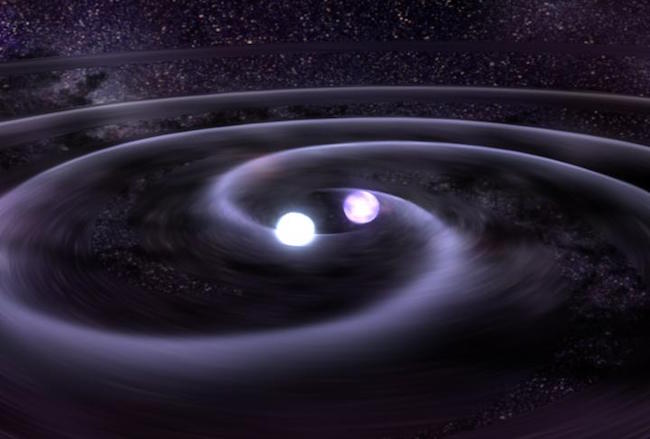
Artist's impression a neutron star merger and the gravitational waves it creates. (Credit: NASA/Goddard Space Flight Center)
As the black holes, stars, or galaxies orbit each other, they send out waves of "gravitational radiation" that travel at the speed of light . The waves that reach us are extremely weak because, like water waves, gravitational waves decrease in strength as they move outward. Despite being weak, the waves can travel unobstructed within the 'fabric' of space-time, providing us with information that light cannot.
How Can We Detect Gravitational Waves?
The detection of gravitational waves requires measurements that detect changes in distance less than the size of an atomic nucleus - that's tiny! To do this, scientists use interferometry, which consists of two parts: test masses separated by a distance and lasers to measure that distance.
Test masses are set at a large distance from each other – the large distance helps make any change in their distance be large enough to measure. The masses are then shielded from all disturbances except gravity , which we cannot shield against.
Then lasers make continuous measurements of the distance between each of the test masses. The masses are free to move in response to gravity so that when a gravitational wave passes, space-time stretches and the time it takes light to travel between the masses changes.
Gravitational waves were first detected by the ground-based LIGO detectors in 2015 using ground-based facilities in Washington and Louisiana. The Virgo detector in Italy spied its first gravitational wave in 2017. A space-based observatory called LISA is scheduled to launch in the early 2030s as part of the European Space Agency's Cosmic Visions Program.
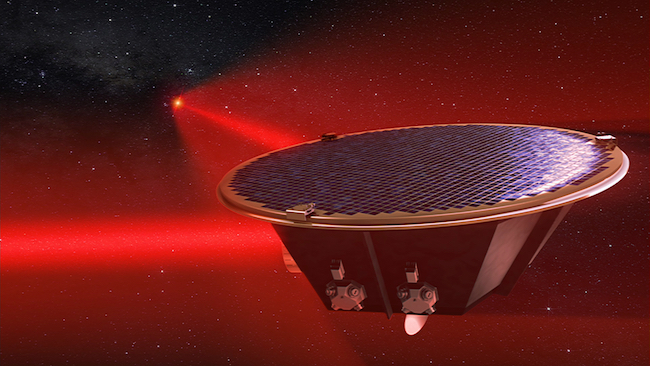
Artist's impression of a Laser Interferometer Space Antenna ( LISA ) mission concept spacecraft. LISA is a space-based observatory of gravitational waves consisting of a constellation of three spacecraft, with launch planned for 2034. It is the third large mission (L3) in ESA's Cosmic Vision plan. (Copyright: AEI/Milde Marketing/Exozet)
What Will We Learn From the Detectors?
Gravitational waves are helping physicists and astronomers to understand some of the most fundamental laws of physics. They tell us about the dynamics of large-scale events in the universe like the formation and growth of galaxies and the supermassive black holes at their centers. With LISA, scientists will be able to probe through space and time, to observe the universe just a fraction of a second after the Big Bang . Using this information, we may be able to learn more about how the universe began and evolved.
Text updated: October 2017

- Project Leader: Dr. Barbara Mattson
- Web Curator: J.D. Myers
- Responsible NASA Official : Dr. Andy Ptak
- Privacy Policy & Important Notices
- Page Last Updated: 11-Oct-2017
- Subscribe to BBC Science Focus Magazine
- Previous Issues
- Future tech
- Everyday science
- Planet Earth
- Newsletters
© Getty Images
Can you have a shock wave in space?
Shocking! Though it wouldn't be similar to a shock wave on Earth, there are still various kinds of shock waves that can occur in low-density environments.
Dr Alastair Gunn
Asked by: Dave Gurling, Billericay
A ‘shock wave’ is the disturbance of material that’s created when a wave moves through a medium at greater than the local speed of sound. Provided there is a ‘medium’ of sufficient density through which a shock wave can travel, there is no reason why shock waves can’t form in space.
However, because most environments in space are of extremely low density, traditional shock waves involving the collision of particles, such as those that give rise to a ‘sonic boom’, are rare. But there are other kinds of shock waves that can occur in low-density environments.
For example, the shock can be propagated by photons interacting with electrons, by a distribution of high energy particles or by magnetic effects. So, shock waves are actually quite common in space. Interplanetary shock waves can occur due to solar flares. ‘Bow shocks’ are formed by the interaction of the solar wind with planetary magnetospheres. Supernovae create powerful shocks, both within the star collapsing to form the explosion and also moving through the interstellar medium itself. Interstellar shocks can also occur simply by the collision or collapse of gas clouds. Black holes, high-density objects such as pulsars, as well as merging galaxies (and even just the motion of galaxies themselves) are also known to form shock waves of various forms.
- What ignites supernova explosions?
- What would happen if a very strong gravitational wave passed through us?
Subscribe to BBC Focus magazine for fascinating new Q&As every month and follow @sciencefocusQA on Twitter for your daily dose of fun science facts.
Share this article

- Terms & Conditions
- Privacy policy
- Cookies policy
- Code of conduct
- Magazine subscriptions
- Manage preferences

- Login/Register
- Solar System
- Exotic Objects
- Upcoming Events
- Deep-Sky Objects
- Observing Basics
- Telescopes and Equipment
- Astrophotography
- Space Exploration
- Human Spaceflight
- Robotic Spaceflight
- The Magazine
Is there any sound in space? An astronomer explains

How far can sound travel through space, since it’s so empty? Is there an echo in space? – Jasmine, age 14, Everson, Washington
In space, no one can hear you scream.
You may have heard this saying. It’s the tagline from the famous 1979 science fiction movie “ Alien .” It’s a scary thought, but is it true? The simple answer is yes, no one can hear you scream in space because there is no sound or echo in space.
I’m a professor of astronomy , which means I study space and how it works. Space is silent – for the most part.
How sound works
To understand why there’s no sound in space, first consider how sound works. Sound is a wave of energy that moves through a solid, a liquid or a gas.
Sound is a compression wave . The energy created when your vocal cords vibrate slightly compresses the air in your throat, and the compressed energy travels outward.
A good analogy for sound is a Slinky toy . If you stretch out a Slinky and push hard on one end, a compression wave travels down the Slinky.
When you talk, your vocal cords vibrate. They jostle air molecules in your throat above your vocal cords, which in turn jostle or bump into their neighbors, causing a sound to come out of your mouth.
Sound moves through air the same way it moves through your throat. Air molecules near your mouth bump into their neighbors, which in turn bump into their neighbors, and the sound moves through the air. The sound wave travels quickly , about 760 miles per hour (1,223 kilometers per hour), which is faster than a commercial jet.
Space is a vacuum
So what about in space?
Space is a vacuum, which means it contains almost no matter. The word vacuum comes from the Latin word for empty .
Sound is carried by atoms and molecules. In space, with no atoms or molecules to carry a sound wave, there’s no sound. There’s nothing to get in sound’s way out in space, but there’s nothing to carry it, so it doesn’t travel at all. No sound also means no echo. An echo happens when a sound wave hits a hard, flat surface and bounces back in the direction it came from.
By the way, if you were caught in space outside your spacecraft with no spacesuit, the fact that no one could hear your cry for help is the least of your problems. Any air you still had in your lungs would expand because it was at higher pressure than the vacuum outside. Your lungs would rupture. In a mere 10 to 15 seconds , you’d be unconscious due to a lack of oxygen.
Sound in the solar system
Scientists have wondered how human voices would sound on our nearest neighboring planets, Venus and Mars. This experiment is hypothetical because Mars is usually below freezing , and its atmosphere is thin, unbreathable carbon dioxide . Venus is even worse – its air is hot enough to melt lead, with a thick carbon dioxide atmosphere.
On Mars, your voice would sound tinny and hollow, like the sound of a piccolo . On Venus , the pitch of your voice would be much deeper, like the sound of a booming bass guitar. The reason is the thickness of the atmosphere. On Mars the thin air creates a high-pitched sound, and on Venus the thick air creates a low-pitched sound. The team that worked this out simulated other solar system sounds , like a waterfall on Saturn’s moon Titan.
Deep space sounds
While space is a good enough vacuum that normal sound can’t travel through it, it’s actually not a perfect vacuum, and it does have some particles floating through it.
Beyond the Earth and its atmosphere, there are five particles in a typical cubic centimeter – the volume of a sugar cube – that are mostly hydrogen atoms. By contrast, the air you are breathing is 10 billion billion (10 19) times more dense. The density goes down with distance from the Sun, and in the space between stars there are 0.1 particles per cubic centimeter. In vast voids between galaxies , it is a million times lower still – fantastically empty.
The voids of space are kept very hot by radiation from stars. The very spread-out matter found there is in a physical state called a plasma .
A plasma is a gas in which electrons are separated from protons. In a plasma, the physics of sound waves get complicated . Waves travel much faster in this low-density medium, and their wavelength is much longer.
In 2022, NASA released a spectacular example of sound in space . It used X-ray data to make an audible recording that represents the way a massive black hole stirs up plasma in the Perseus galaxy cluster, 250 million light years from Earth. The black hole itself emits no sound, but the diffuse plasma around it carries very long wavelength sound waves.
The natural sound is far too low a frequency for the human ear to hear, 57 octaves below middle C, which is the middle note on a piano and in the middle of the range of sound people can hear. But after raising the frequency to the audible range, the result is chilling – it’s the sound of a black hole growling in deep space.
This article was first published on The Conversation .
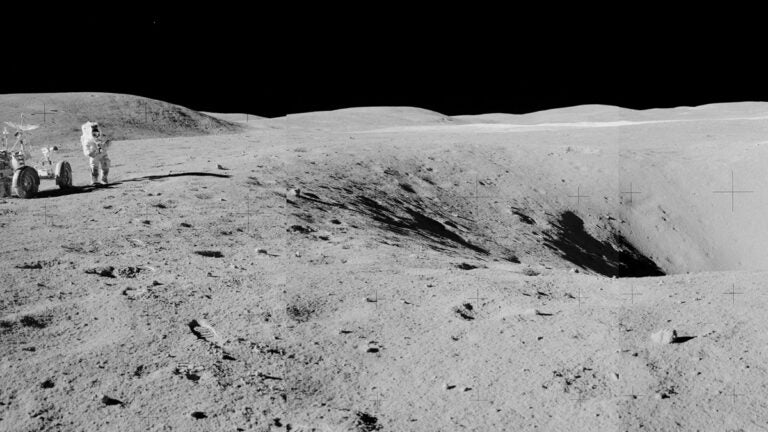
Traces of Earth’s earliest atmosphere could be buried on the Moon
![do waves travel in space Albireo (Beta [β] Cygni) is a classic example of a double star with contrasting colors.](https://www.astronomy.com/uploads/2024/08/Albireo.jpg)
What gives stars their colors?
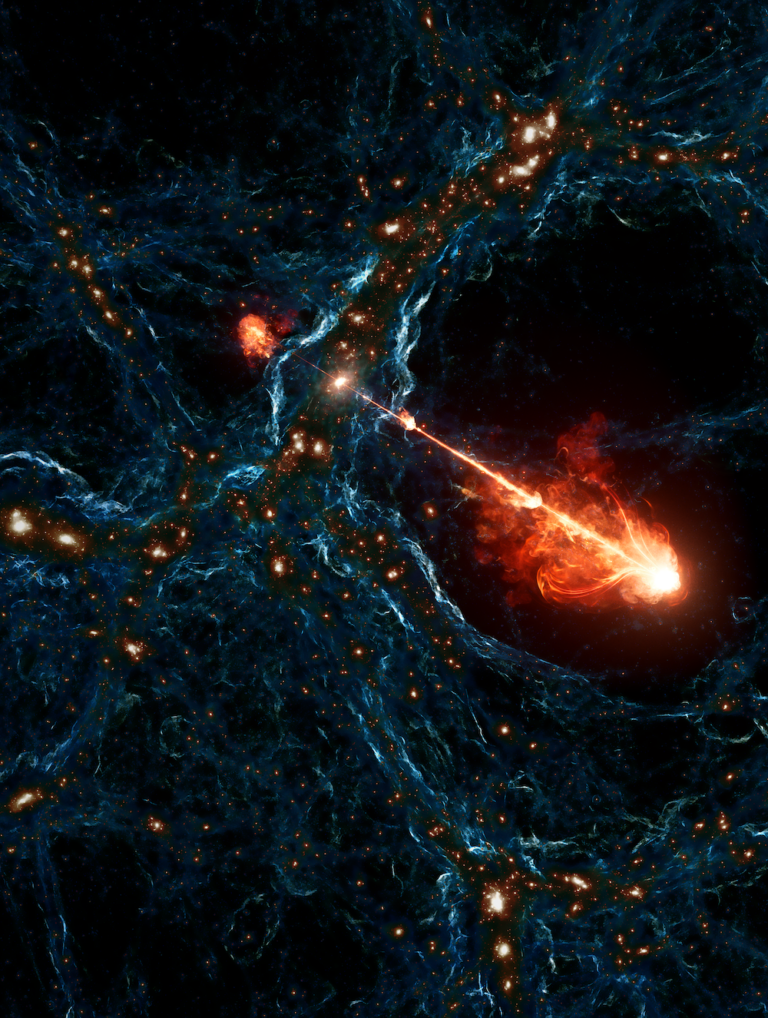
Black hole caught blasting jets out into the cosmic void

’Starry Night’ captures the turbulent physics of why stars twinkle

The “Wow! Signal,” not surprisingly, was a dud
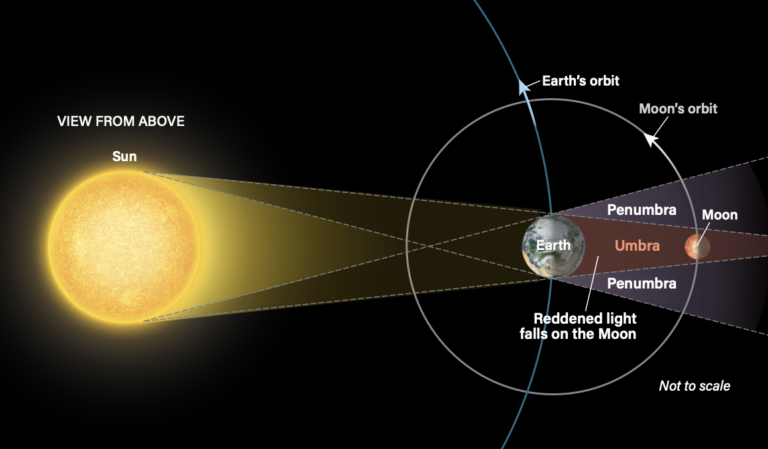
Why can we still see the Moon’s disk during a total lunar eclipse?
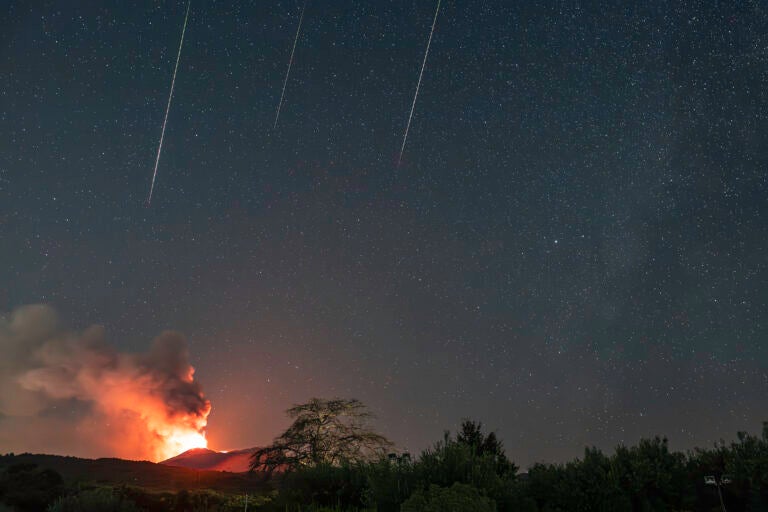
Could we experience the first-ever human-made meteor shower?
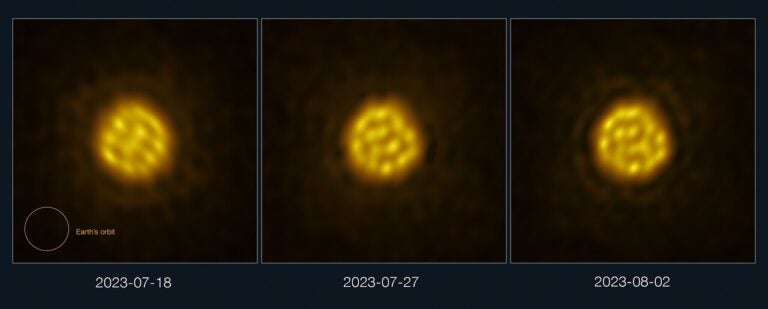
ALMA reveals a star’s surface in unprecedented detail
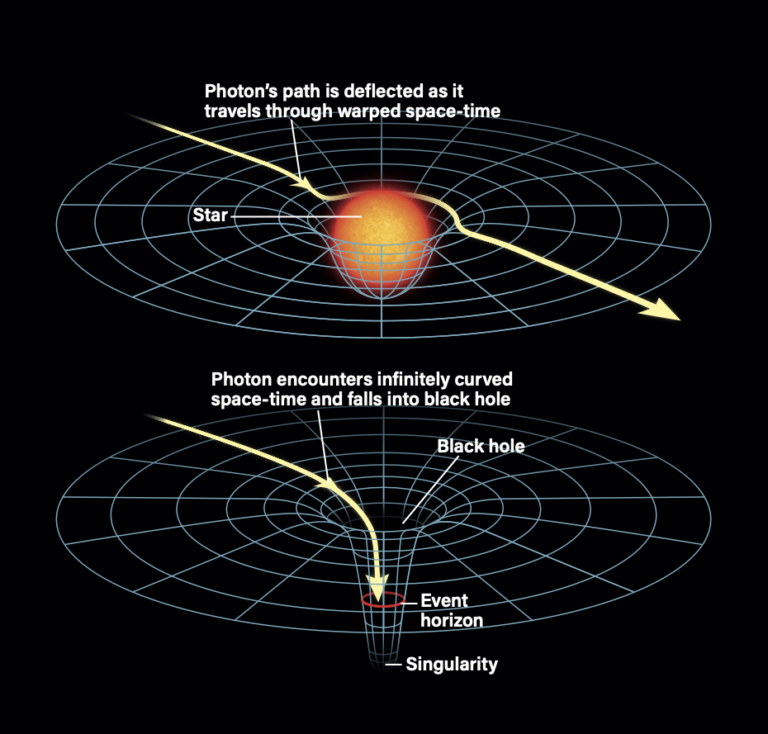
How can a black hole pull light into itself if a photon is massless?
- Become A Member
- Gift Membership
- Kids Membership
- Other Ways to Give
- Explore Worlds
- Defend Earth
How We Work
- Education & Public Outreach
- Space Policy & Advocacy
- Science & Technology
- Global Collaboration
Our Results
Learn how our members and community are changing the worlds.
Our citizen-funded spacecraft successfully demonstrated solar sailing for CubeSats.
Space Topics
- Planets & Other Worlds
- Space Missions
- Space Policy
- Planetary Radio
- Space Images
The Planetary Report
The search for life.
How life on Earth shapes the hunt for life out there.
Get Involved
Membership programs for explorers of all ages.
Get updates and weekly tools to learn, share, and advocate for space exploration.
Volunteer as a space advocate.
Support Our Mission
- Renew Membership
- Society Projects
The Planetary Fund
Accelerate progress in our three core enterprises — Explore Worlds, Find Life, and Defend Earth. You can support the entire fund, or designate a core enterprise of your choice.
- Strategic Framework
- News & Press

The Planetary Society
Know the cosmos and our place within it.
Our Mission
Empowering the world's citizens to advance space science and exploration.
- Explore Space
- Take Action
- Member Community
- Account Center
- “Exploration is in our nature.” - Carl Sagan
Emily Lakdawalla • Feb 24, 2012
This is how far human radio broadcasts have reached into the galaxy
The other day, I was playing around with stumbleupon and came across this photo, which -- well, it speaks for itself. Wow.
Gives you perspective, doesn't it? Actually, I'm a little surprised that the dot shows up on this image at all. Some people describe this as humbling, but for me, I see it as just the beginning. I'm very grateful to be a member of the very few generations of humanity that have ever lived who are (a) capable of creating radio broadcasts and (b) realizing how much more of the universe there is beyond what we've experienced.
I tweeted a link to it, and while I expected some retweets, I was surprised to see its spread -- I think it's probably the single most retweeted tweet I have ever written. There's probably several reasons for that. Links to photos are more likely to be retweeted than others. Very short but still substantial tweets are more likely to be retweeted, because it gives the repeater scope for their own commentary. And this is the sort of thing that can make just about anybody who is capable of operating a cell phone go "hmm," so it has wide appeal.
The one thing I feel bad about is that stumbleupon sent me directly to the photo on somebody else's website, and I didn't bother looking up its origin before I tweeted the link. So now I have, and I can tell you that the diagram was made by Adam Grossman on the jackadamblog , using an artist's concept of the Milky Way by Nick Risinger that he took from Wikipedia. They have a neato-looking iOS app, Dark Sky , that provides very short-term weather predictions. My apologies, Adam, for sending so much traffic directly to the photo rather than to your blog! Hopefully this post will correct that error.
A special note to the pedants: yes, I do realize that the signal from our radio and TV broadcasts is so attenuated by that 100-light-year boundary as to be undetectable except by some kind of magical alien technology. That's not the point. Don't be so literal!
One last thing: my apologies for no post yesterday and the likelihood of very few posts next week. I have a lot of other projects going right now that do not automatically produce blog posts, and not enough time.
Take action for space exploration!
Give today to have your gift matched up to $75,000.
For full functionality of this site it is necessary to enable JavaScript. Here are instructions on how to enable JavaScript in your web browser .

Wave Behaviors
Light waves across the electromagnetic spectrum behave in similar ways. When a light wave encounters an object, they are either transmitted, reflected, absorbed, refracted, polarized, diffracted, or scattered depending on the composition of the object and the wavelength of the light.
Specialized instruments onboard NASA spacecraft and airplanes collect data on how electromagnetic waves behave when they interact with matter. These data can reveal the physical and chemical composition of matter.
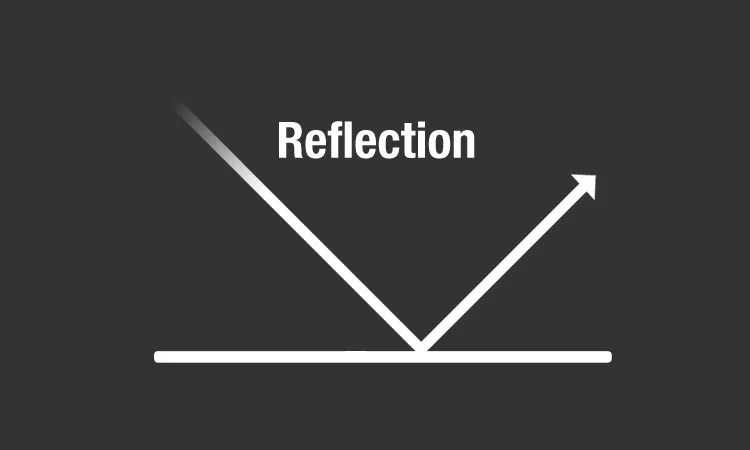
Reflection is when incident light (incoming light) hits an object and bounces off. Very smooth surfaces such as mirrors reflect almost all incident light.
The color of an object is actually the wavelengths of the light reflected while all other wavelengths are absorbed. Color, in this case, refers to the different wavelengths of light in the visible light spectrum perceived by our eyes. The physical and chemical composition of matter determines which wavelength (or color) is reflected.
This reflective behavior of light is used by lasers onboard NASA's Lunar Reconnaissance Orbiter to map the surface of the Moon. The instrument measures the time it takes a laser pulse to hit the surface and return. The longer the response time, the farther away the surface and lower the elevation. A shorter response time means the surface is closer or higher in elevation. In this image of the Moon's southern hemisphere, low elevations are shown as purple and blue, and high elevations are shown in red and brown.
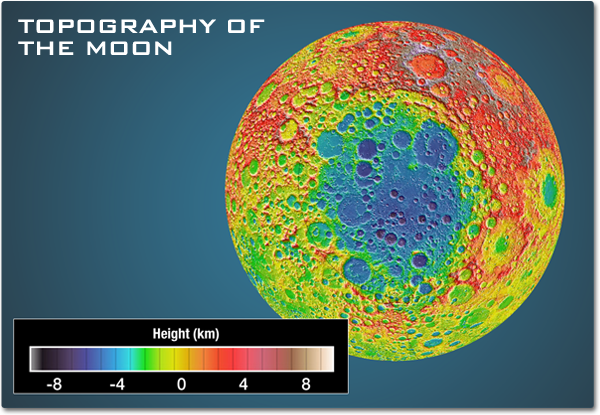
Absorption occurs when photons from incident light hit atoms and molecules and cause them to vibrate. The more an object's molecules move and vibrate, the hotter it becomes. This heat is then emitted from the object as thermal energy.
Some objects, such as darker colored objects, absorb more incident light energy than others. For example, black pavement absorbs most visible and UV energy and reflects very little, while a light-colored concrete sidewalk reflects more energy than it absorbs. Thus, the black pavement is hotter than the sidewalk on a hot summer day. Photons bounce around during this absorption process and lose bits of energy to numerous molecules along the way. This thermal energy then radiates in the form of longer wavelength infrared energy.
Thermal radiation from the energy-absorbing asphalt and roofs in a city can raise its surface temperature by as much as 10° Celsius. The Landsat 7 satellite image below shows the city of Atlanta as an island of heat compared to the surrounding area. Sometimes this warming of air above cities can influence weather, which is called the "urban heat island" effect.
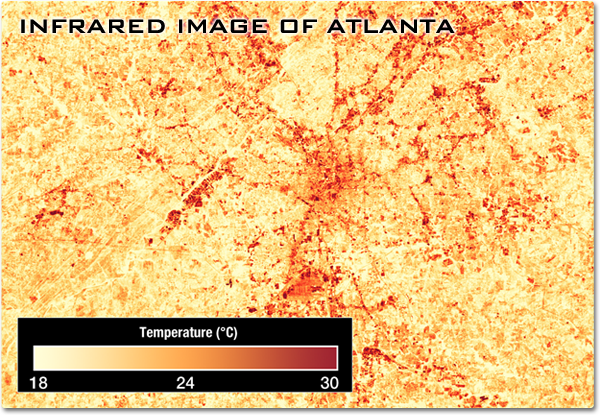
Diffraction
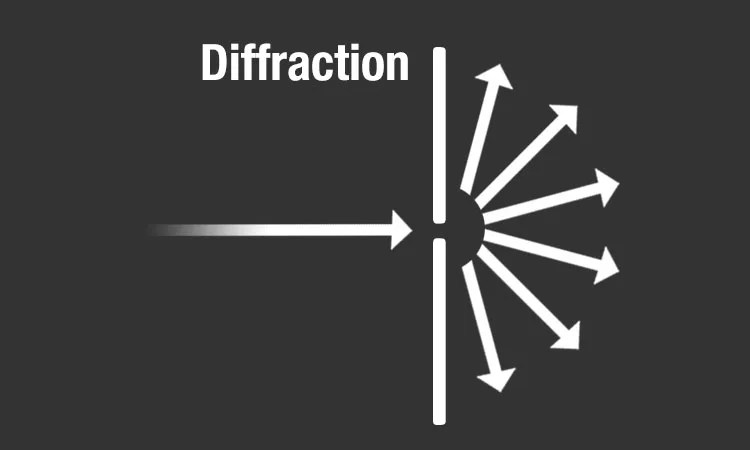
Diffraction is the bending and spreading of waves around an obstacle. It is most pronounced when a light wave strikes an object with a size comparable to its own wavelength. An instrument called a spectrometer uses diffraction to separate light into a range of wavelengths—a spectrum. In the case of visible light, the separation of wavelengths through diffraction results in a rainbow.
A spectrometer uses diffraction (and the subsequent interference) of light from slits or gratings to separate wavelengths. Faint peaks of energy at specific wavelengths can then be detected and recorded. A graph of these data is called a spectral signature. Patterns in a spectral signature help scientists identify the physical condition and composition of stellar and interstellar matter.
The graph below from the SPIRE infrared spectrometer onboard the ESA (European Space Agency) Herschel space telescope reveals strong emission lines from carbon monoxide (CO), atomic carbon, and ionized nitrogen in Galaxy M82.
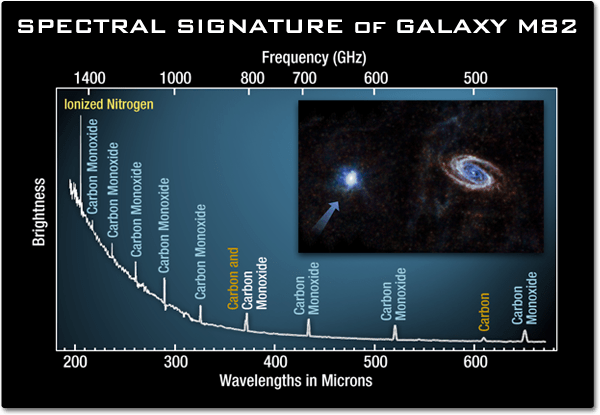
Scattering occurs when light bounces off an object in a variety of directions. The amount of scattering that takes place depends on the wavelength of the light and the size and structure of the object.
The sky appears blue because of this scattering behavior. Light at shorter wavelengths—blue and violet—is scattered by nitrogen and oxygen as it passes through the atmosphere. Longer wavelengths of light—red and yellow—transmit through the atmosphere. This scattering of light at shorter wavelengths illuminates the skies with light from the blue and violet end of the visible spectrum. Even though violet is scattered more than blue, the sky looks blue to us because our eyes are more sensitive to blue light.
Aerosols in the atmosphere can also scatter light. NASA's Cloud-Aerosol Lidar and Infrared Pathfinder Satellite Observation (CALIPSO) satellite can observe the scattering of laser pulses to "see" the distributions of aerosols from sources such as dust storms and forest fires. The image below shows a volcanic ash cloud drifting over Europe from an eruption of Iceland's Eyjafjallajökull Volcano in 2010.
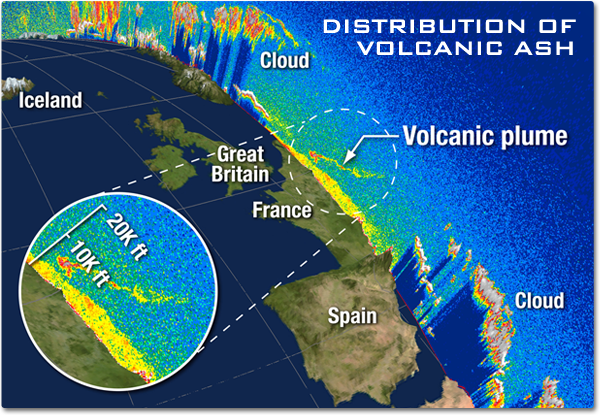
Refraction is when light waves change direction as they pass from one medium to another. Light travels slower in air than in a vacuum, and even slower in water. As light travels into a different medium, the change in speed bends the light. Different wavelengths of light are slowed at different rates, which causes them to bend at different angles.

Next: Visualization: From Energy to Image
National Aeronautics and Space Administration, Science Mission Directorate. (2010). Wave Behaviors. Retrieved [insert date - e.g. August 10, 2016] , from NASA Science website: http://science.nasa.gov/ems/03_behaviors
Science Mission Directorate. "Wave Behaviors" NASA Science . 2010. National Aeronautics and Space Administration. [insert date - e.g. 10 Aug. 2016] http://science.nasa.gov/ems/03_behaviors
Discover More Topics From NASA
James Webb Space Telescope

Perseverance Rover

Parker Solar Probe

Why does it take so long for the radio waves to travel through space?
Actually, radio waves travel very quickly through space. Radio waves are a kind of electromagnetic radiation, and thus they move at the speed of light. The speed of light is a little less than 300,000 km per second. At that speed, a beam of light could go around the Earth at the equator more then 7 times in a second.
The reason that it takes so long for radio messages to travel in space is that space is mind-bogglingly big. The distances to be traveled are so great that even light or radio waves take a while getting there. It takes around eight minutes for radio waves to travel from the Earth to the Sun, and four years to get from here to the nearest star.
How long does it take for transmissions to get between DS1 and Earth? How often is DS1 in communication with Earth? What are radio waves?
How is lag dealt with? Why does the data transfer rate have to drop with distance? What kind of data is DS1 sending back? How do the instruments and sensors coordinate sending signals? How much data is DS1 able to transfer? What is electromagnetic radiation?
How do you make a radio wave?

Suggested Searches
- Climate Change
- Expedition 64
- Mars perseverance
- SpaceX Crew-2
- International Space Station
- View All Topics A-Z
Humans in Space
Earth & climate, the solar system, the universe, aeronautics, learning resources, news & events.
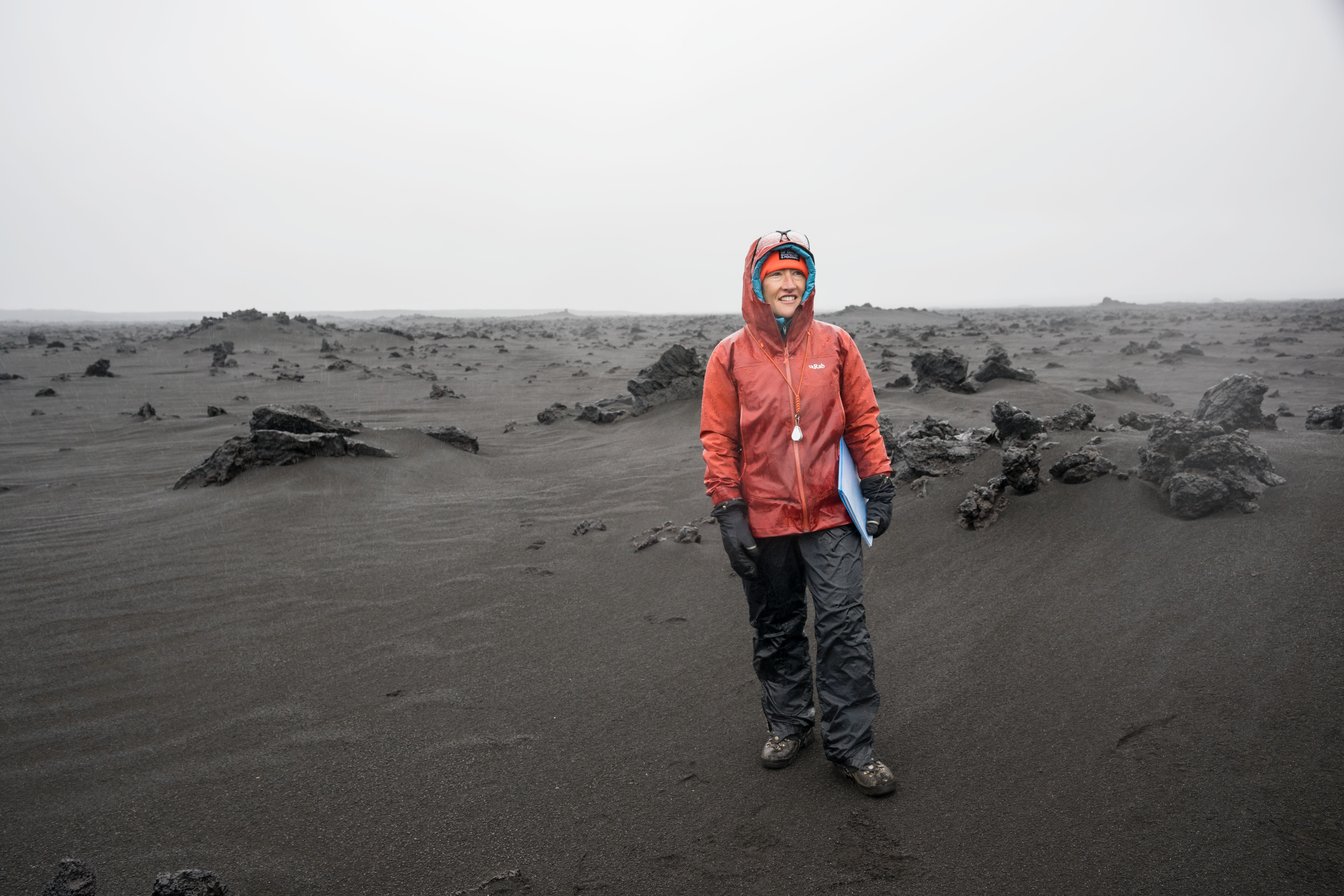
NASA’s Artemis II Crew Uses Iceland Terrain for Lunar Training
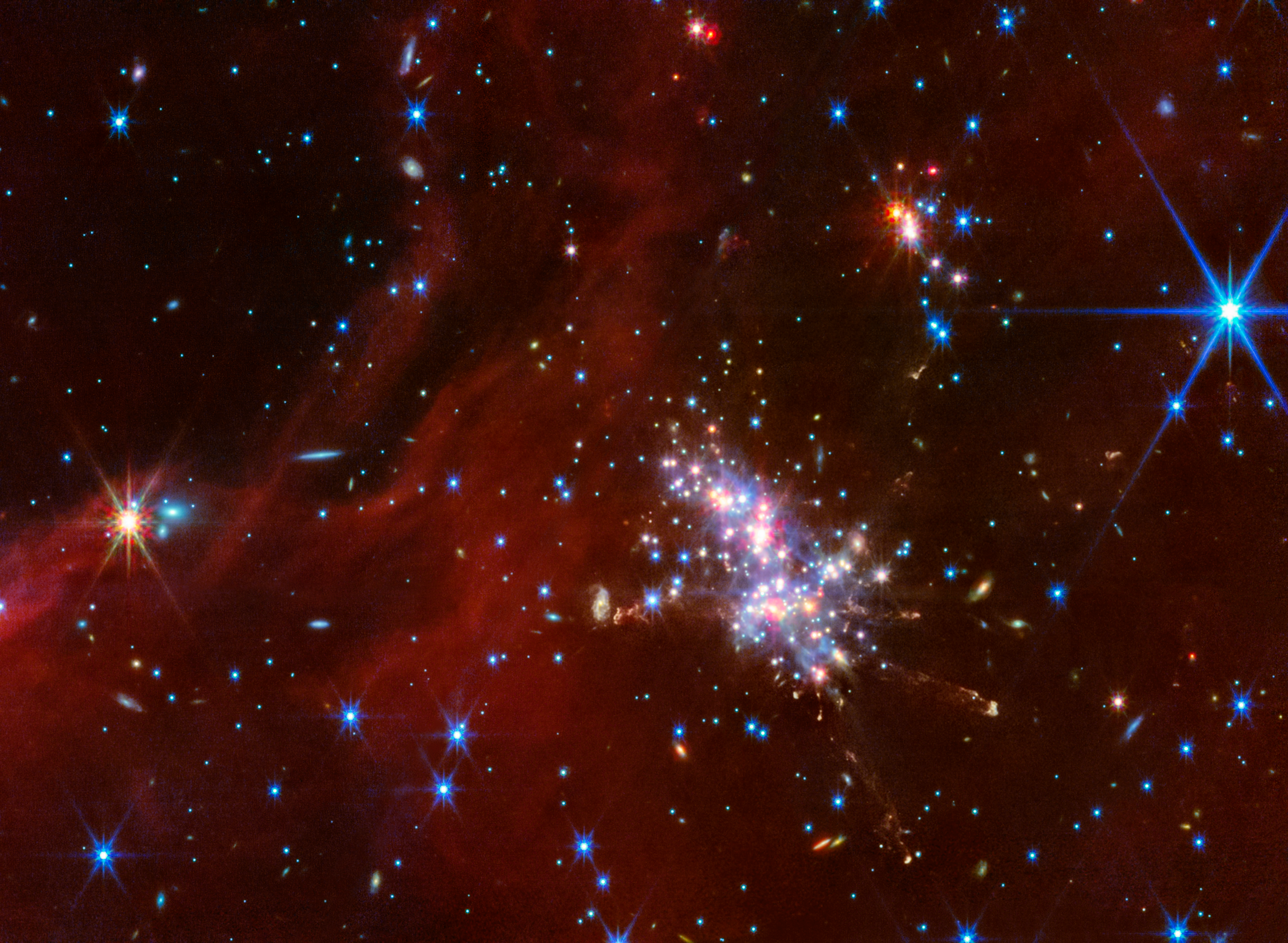
NASA’s Webb Peers into the Extreme Outer Galaxy

What’s Up: September 2024 Skywatching Tips from NASA
- Search All NASA Missions
- A to Z List of Missions
- Upcoming Launches and Landings
- Spaceships and Rockets
- Communicating with Missions
- James Webb Space Telescope
- Hubble Space Telescope
- Why Go to Space
- Commercial Space
- Destinations
- Living in Space
- Explore Earth Science
- Earth, Our Planet
- Earth Science in Action
- Earth Multimedia
- Earth Science Researchers
- Pluto & Dwarf Planets
- Asteroids, Comets & Meteors
- The Kuiper Belt
- The Oort Cloud
- Skywatching
- The Search for Life in the Universe
- Black Holes
- The Big Bang
- Dark Energy & Dark Matter
- Earth Science
- Planetary Science
- Astrophysics & Space Science
- The Sun & Heliophysics
- Biological & Physical Sciences
- Lunar Science
- Citizen Science
- Astromaterials
- Aeronautics Research
- Human Space Travel Research
- Science in the Air
- NASA Aircraft
- Flight Innovation
- Supersonic Flight
- Air Traffic Solutions
- Green Aviation Tech
- Drones & You
- Technology Transfer & Spinoffs
- Space Travel Technology
- Technology Living in Space
- Manufacturing and Materials
- Science Instruments
- For Kids and Students
- For Educators
- For Colleges and Universities
- For Professionals
- Science for Everyone
- Requests for Exhibits, Artifacts, or Speakers
- STEM Engagement at NASA
- NASA's Impacts
- Centers and Facilities
- Directorates
- Organizations
- People of NASA
- Internships
- Our History
- Doing Business with NASA
- Get Involved
NASA en Español
- Aeronáutica
- Ciencias Terrestres
- Sistema Solar
- All NASA News
- Video Series on NASA+
- Newsletters
- Social Media
- Media Resources
- Upcoming Launches & Landings
- Virtual Guest Program
- Image of the Day
- Sounds and Ringtones
- Interactives
- STEM Multimedia
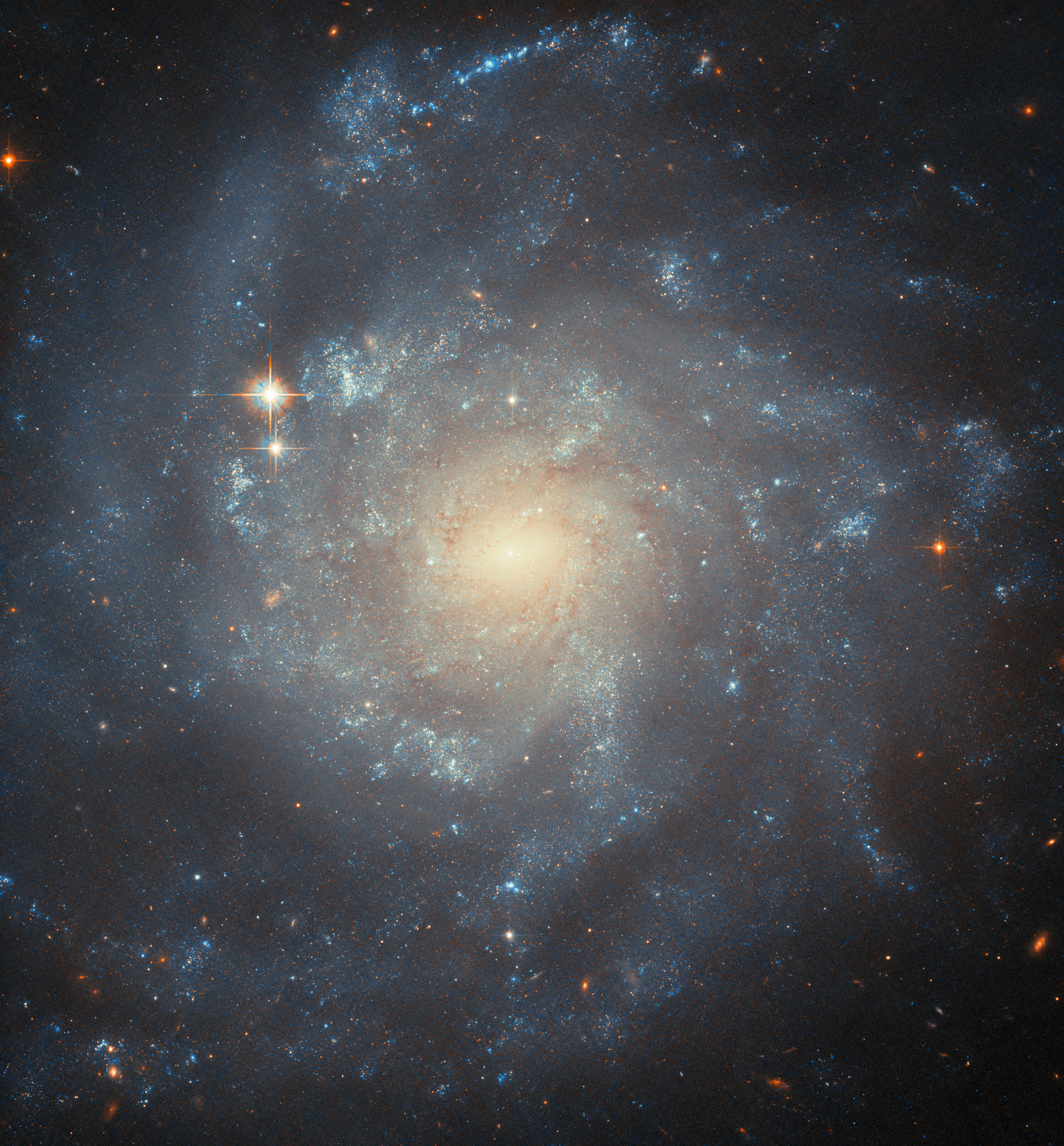
Hubble Examines a Spiral Star Factory
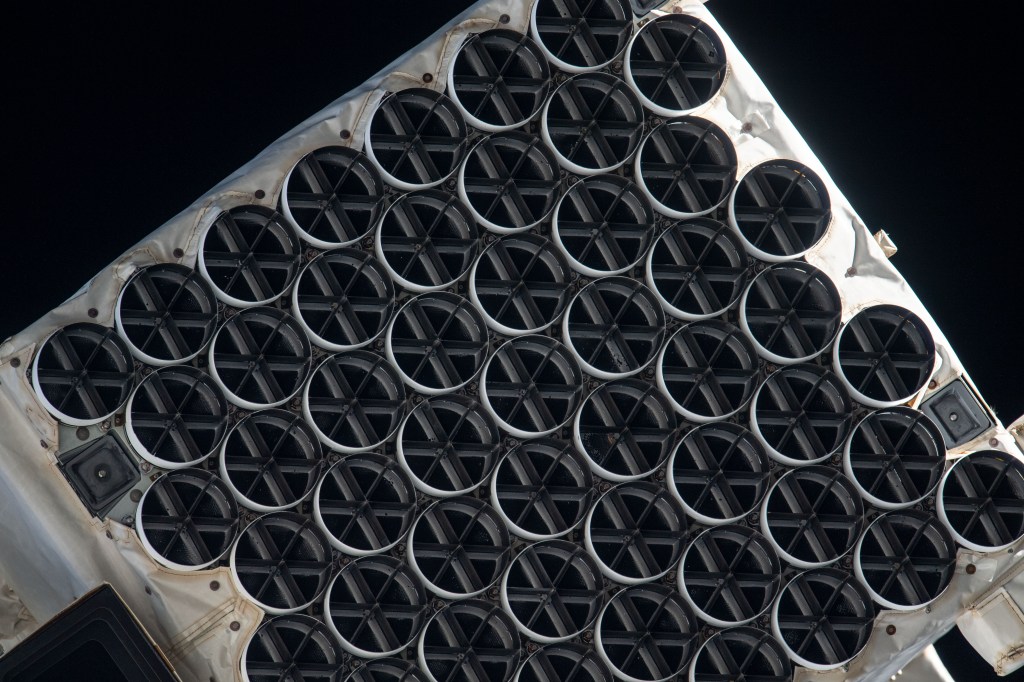
NASA’s SpaceX Crew-9 to Conduct Space Station Research

NASA Astronaut Tracy C. Dyson’s Scientific Mission aboard Space Station
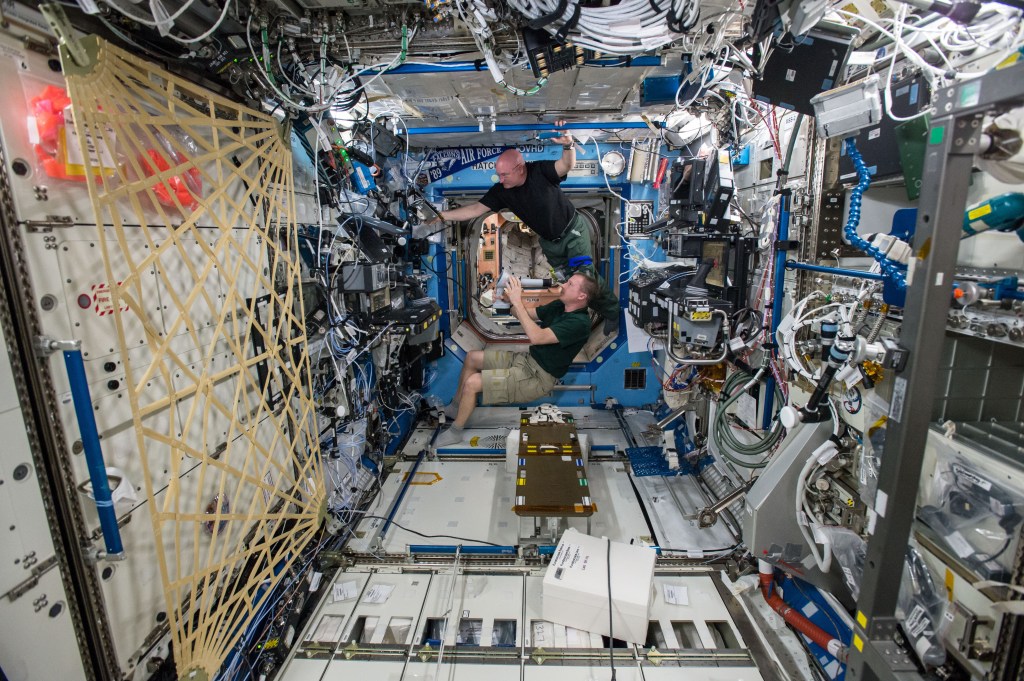
Station Science Top News: September 13, 2024
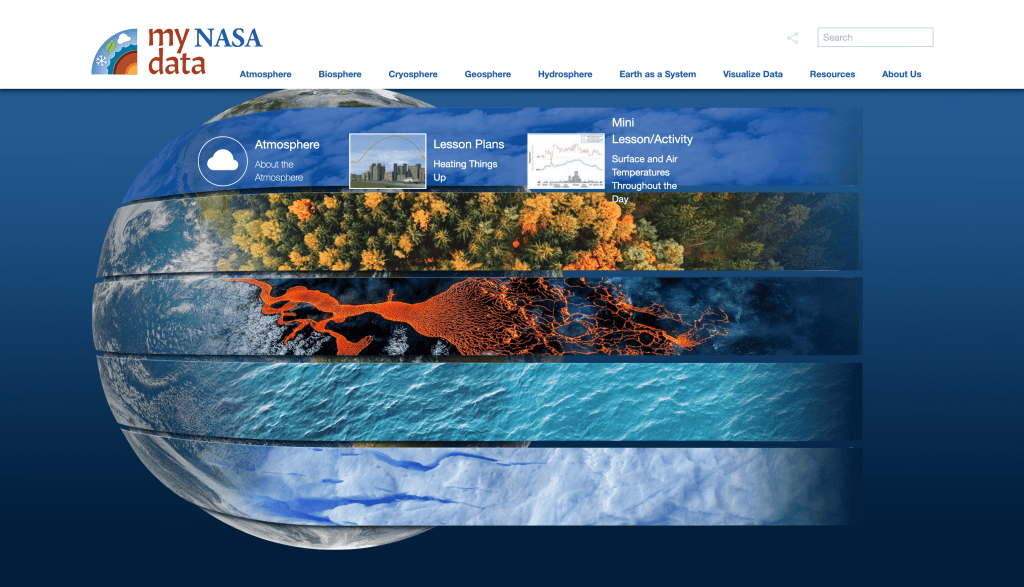
Going Back-to-School with NASA Data
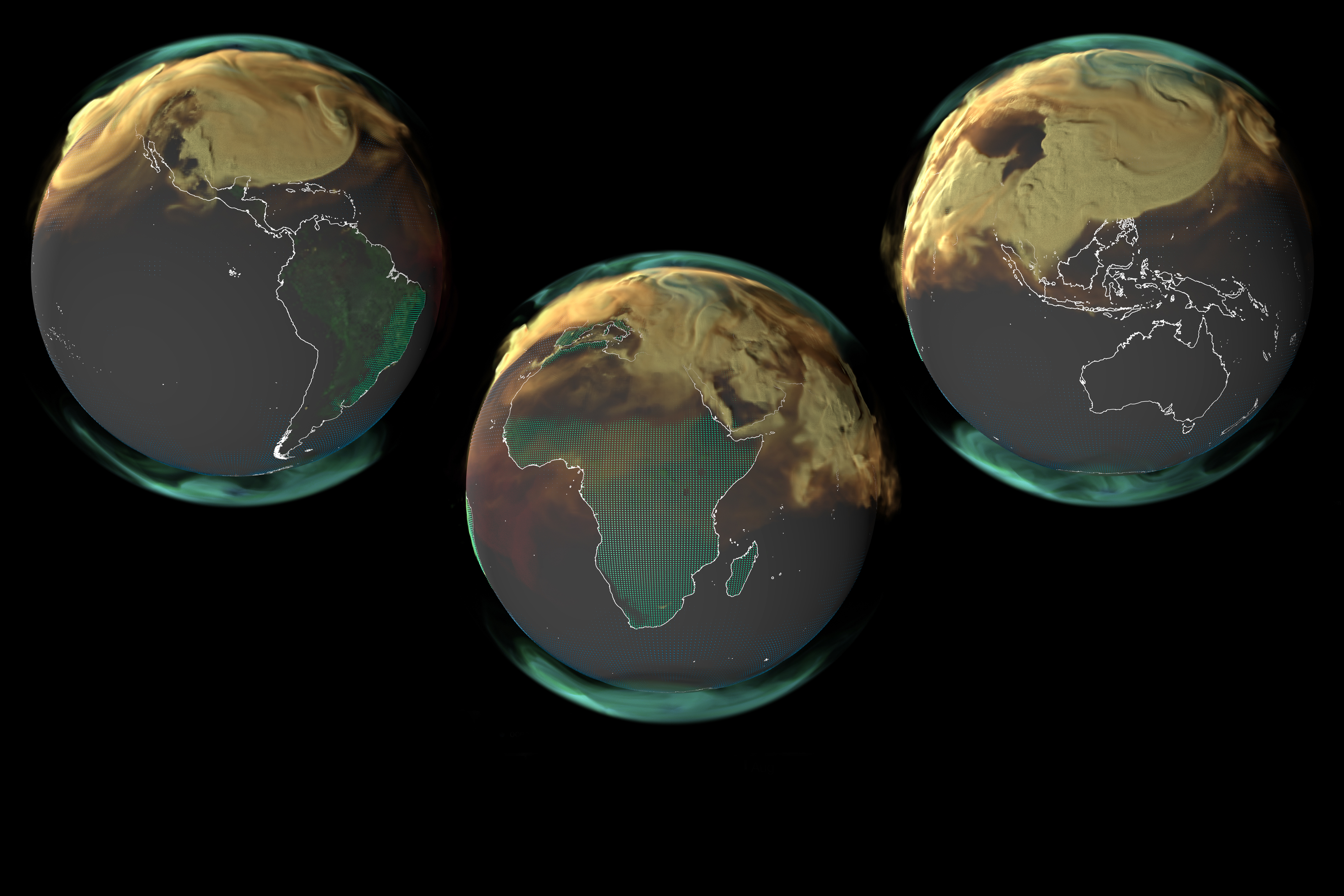
Amendment 48: A.5 Carbon Cycle Science Final Text and Due Dates.

NASA Finds Summer 2024 Hottest to Date
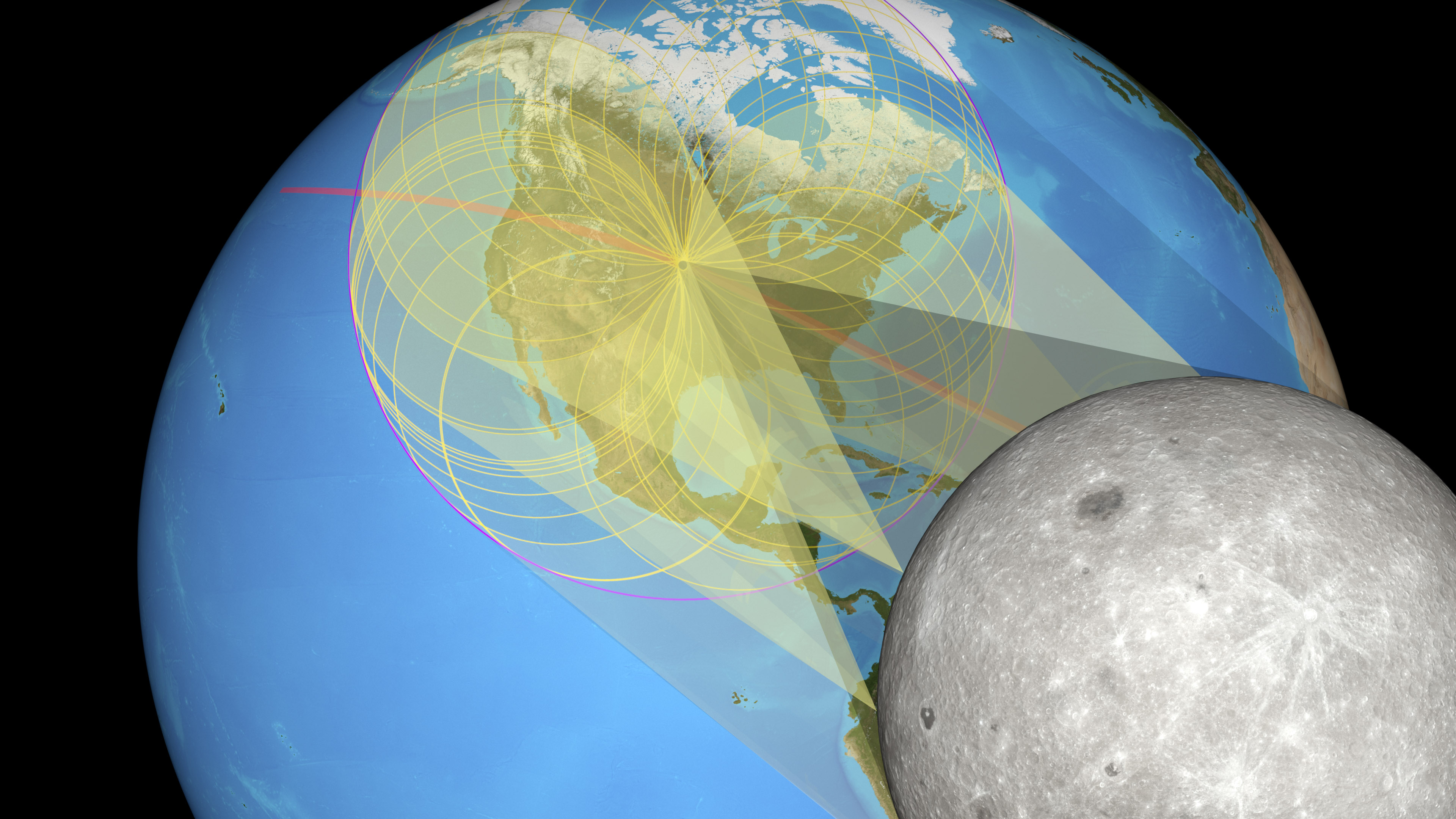
NASA Develops Process to Create Very Accurate Eclipse Maps
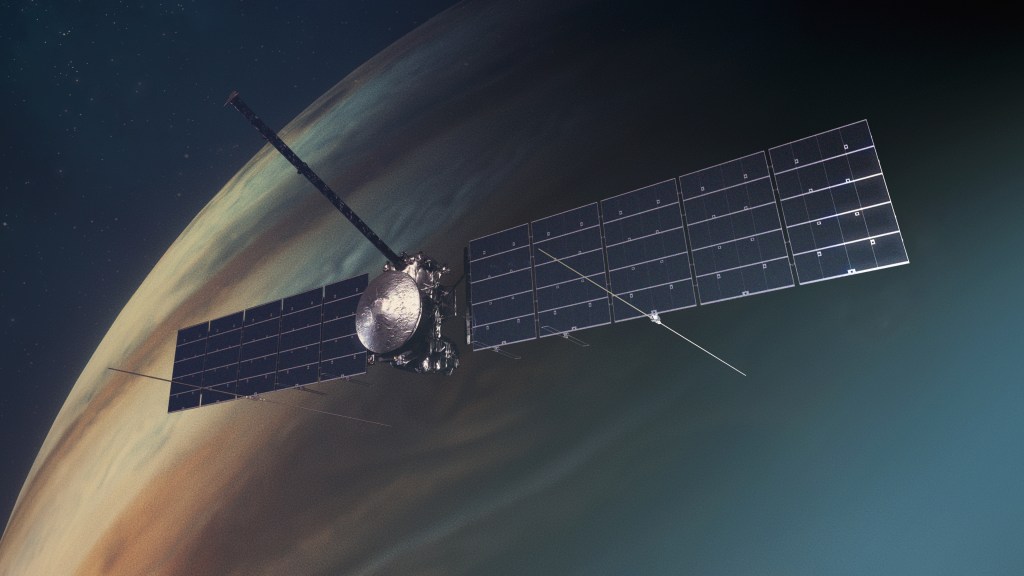
8 Things to Know About NASA’s Mission to an Ocean Moon of Jupiter
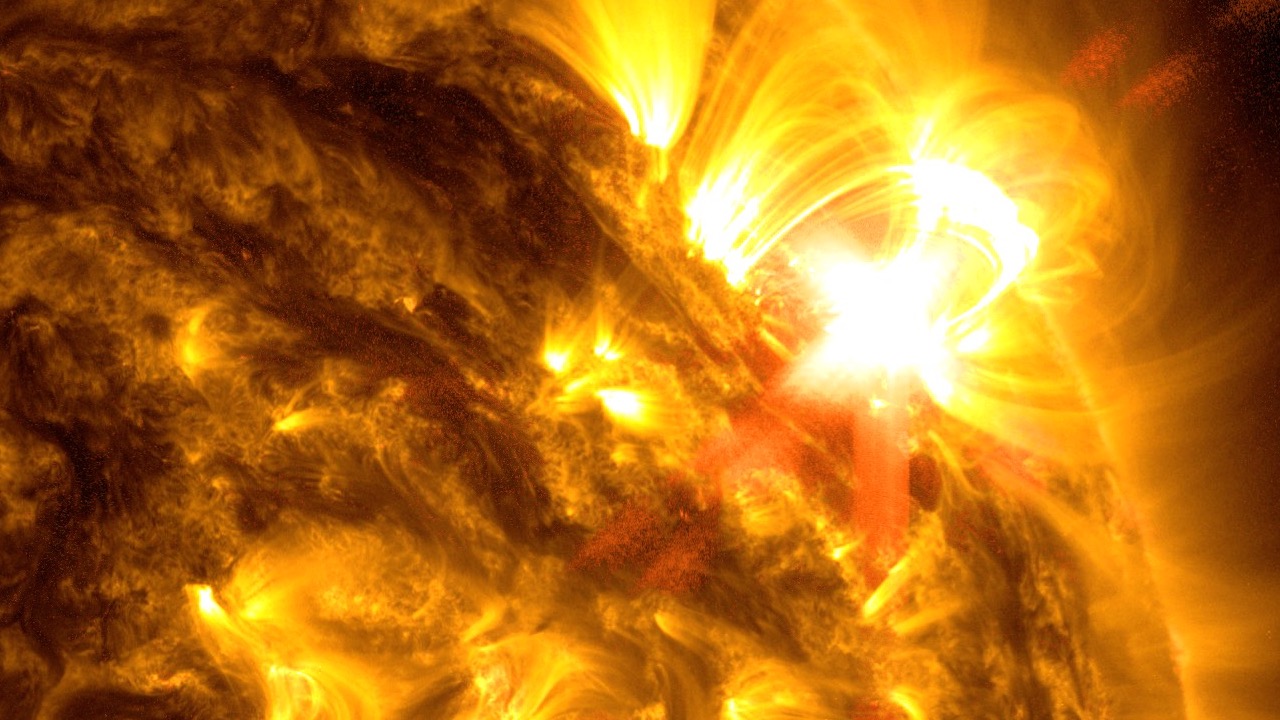
Solar Storms and Flares

Burst Chaser
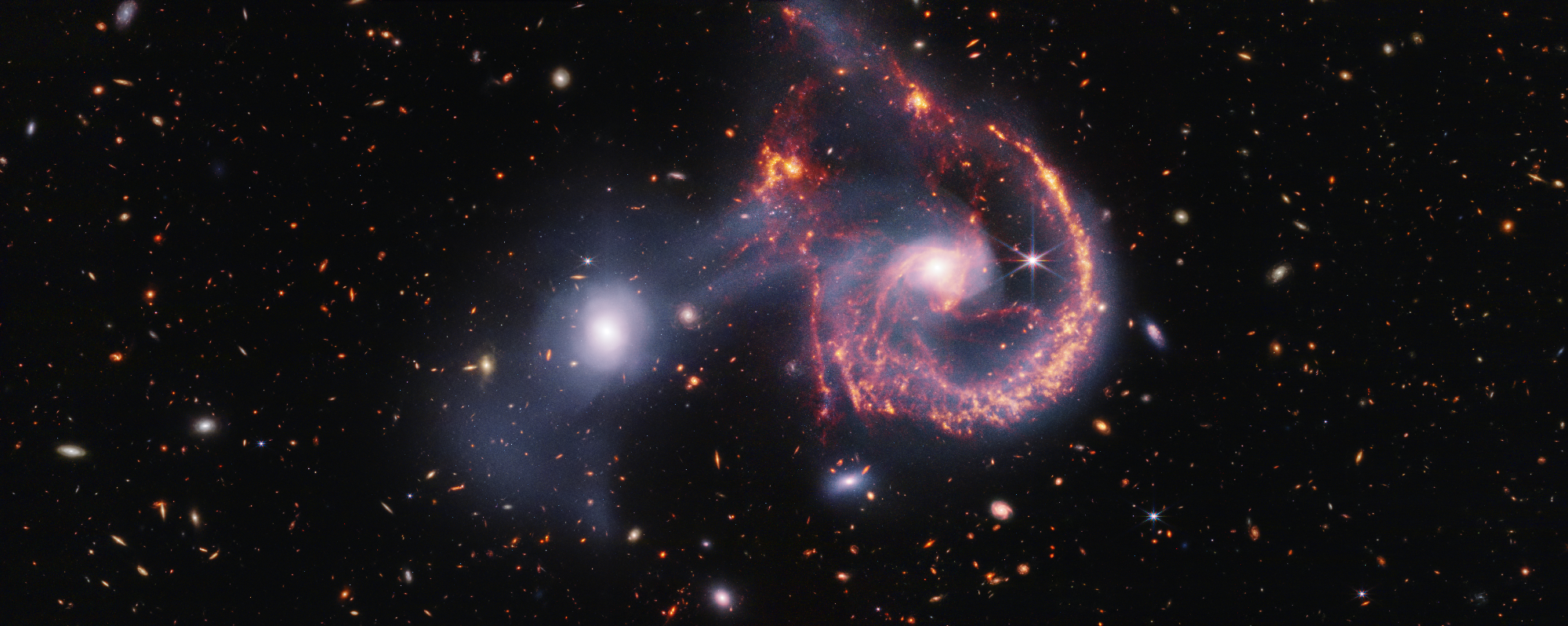
NASA’s Webb Provides Another Look Into Galactic Collisions
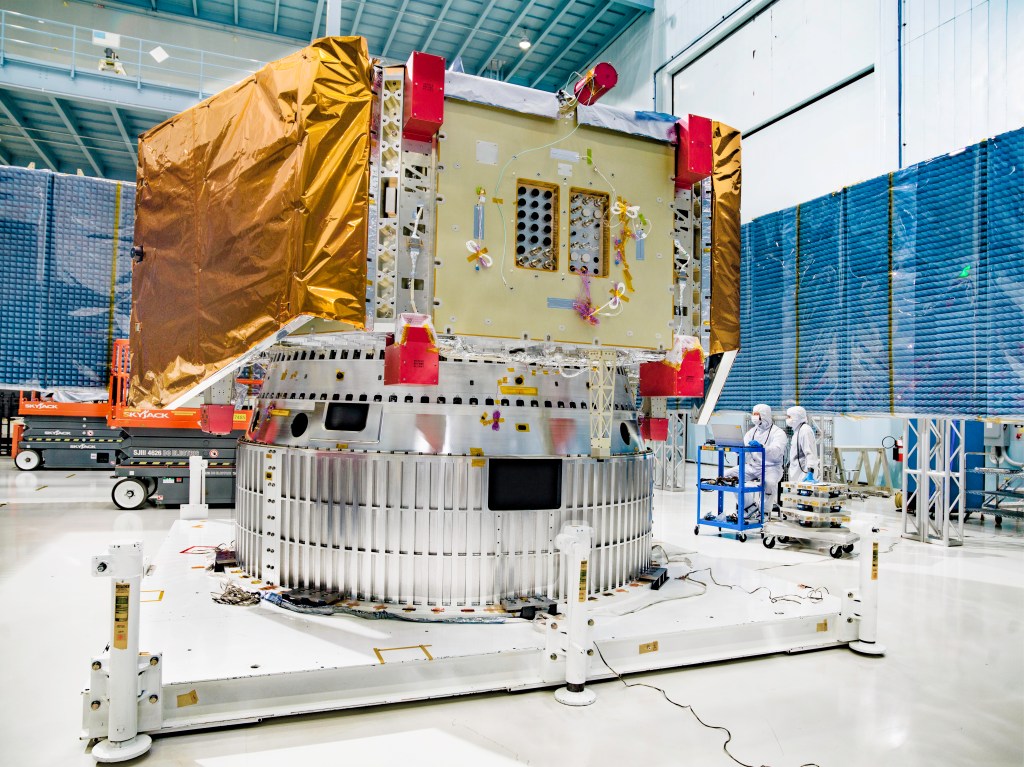
NASA Completes Spacecraft to Transport, Support Roman Space Telescope
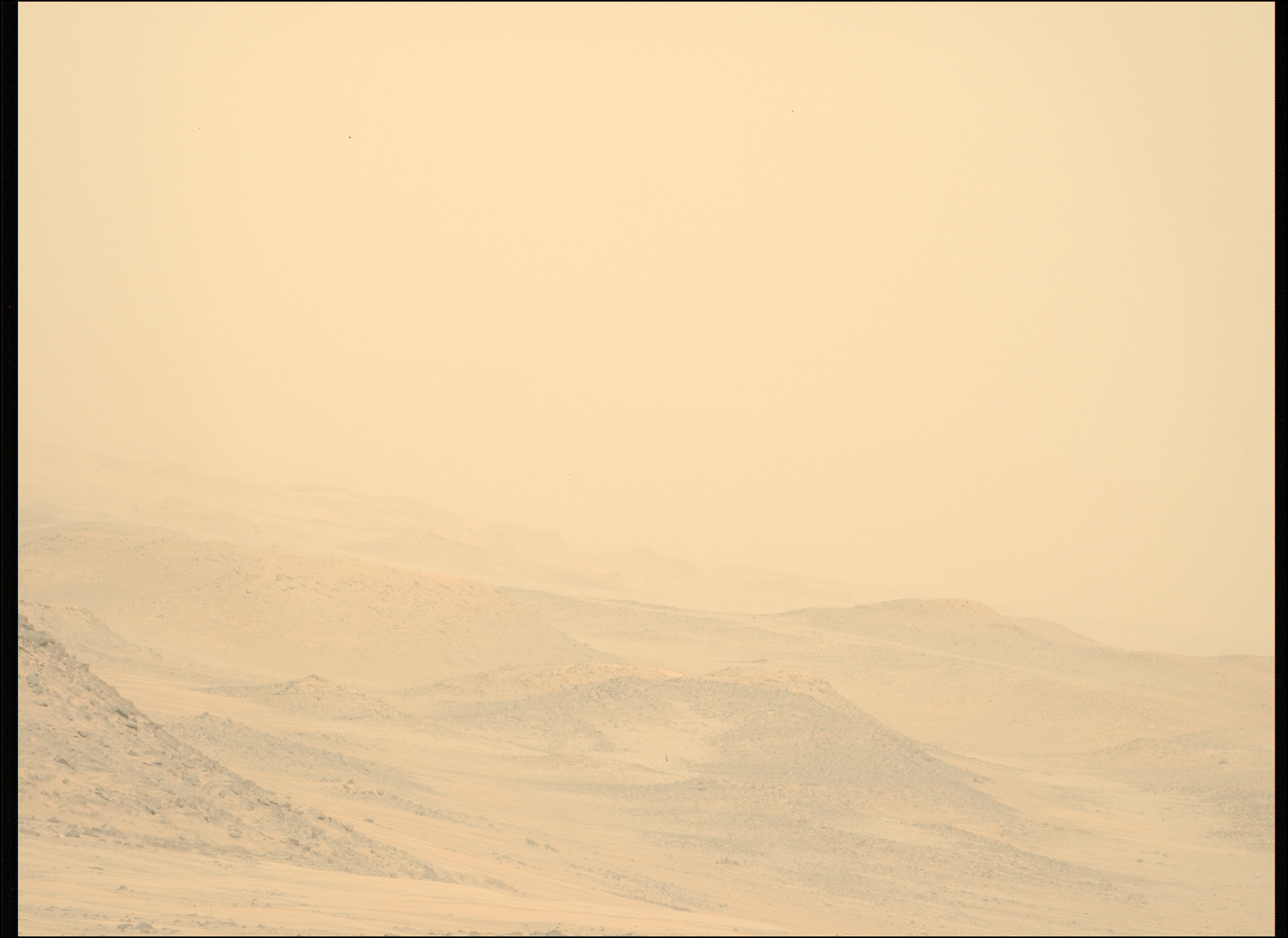
Amendment 50: F.18 MOSAICS DRAFT Text Released for Community Comment.
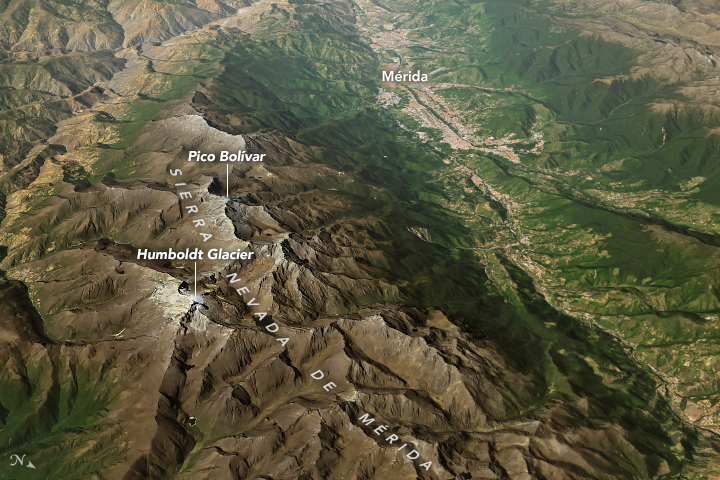
A.55 Decadal Survey Incubation Program: Science and Technology Date Change for Preproposal Telecon
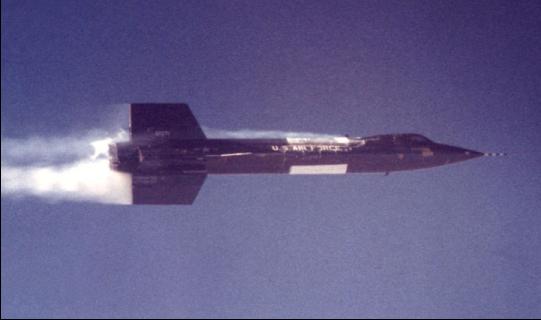
65 Years Ago: First Powered Flight of the X-15 Hypersonic Rocket Plane
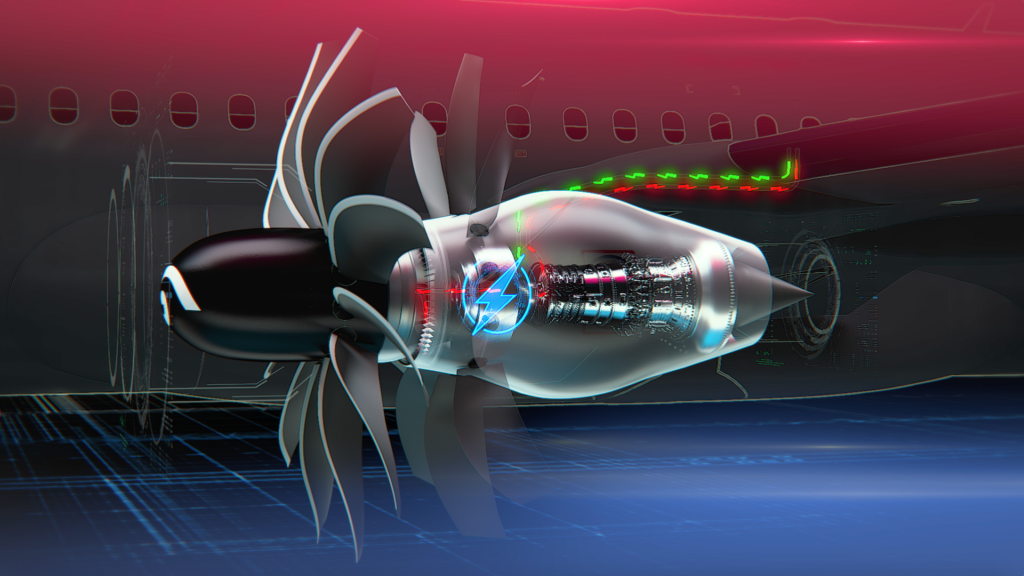
NASA, GE Aerospace Advancing Hybrid-Electric Airliners with HyTEC

NASA Tunnel Generates Decades of Icy Aircraft Safety Data
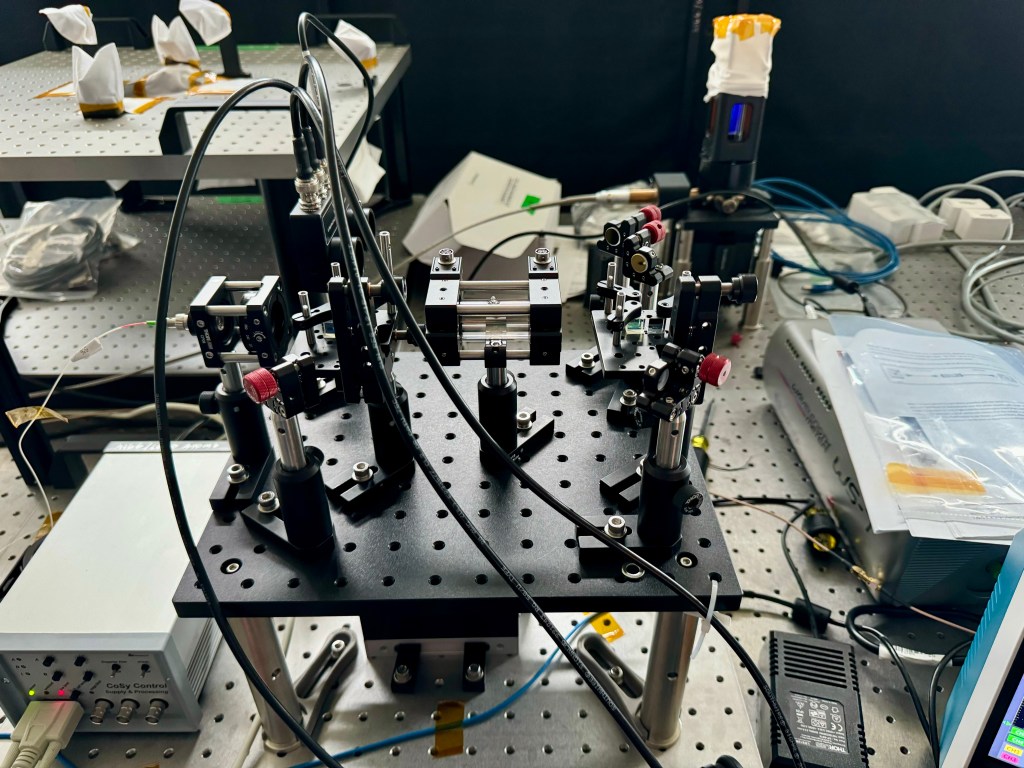
Reinventing the Clock: NASA’s New Tech for Space Timekeeping
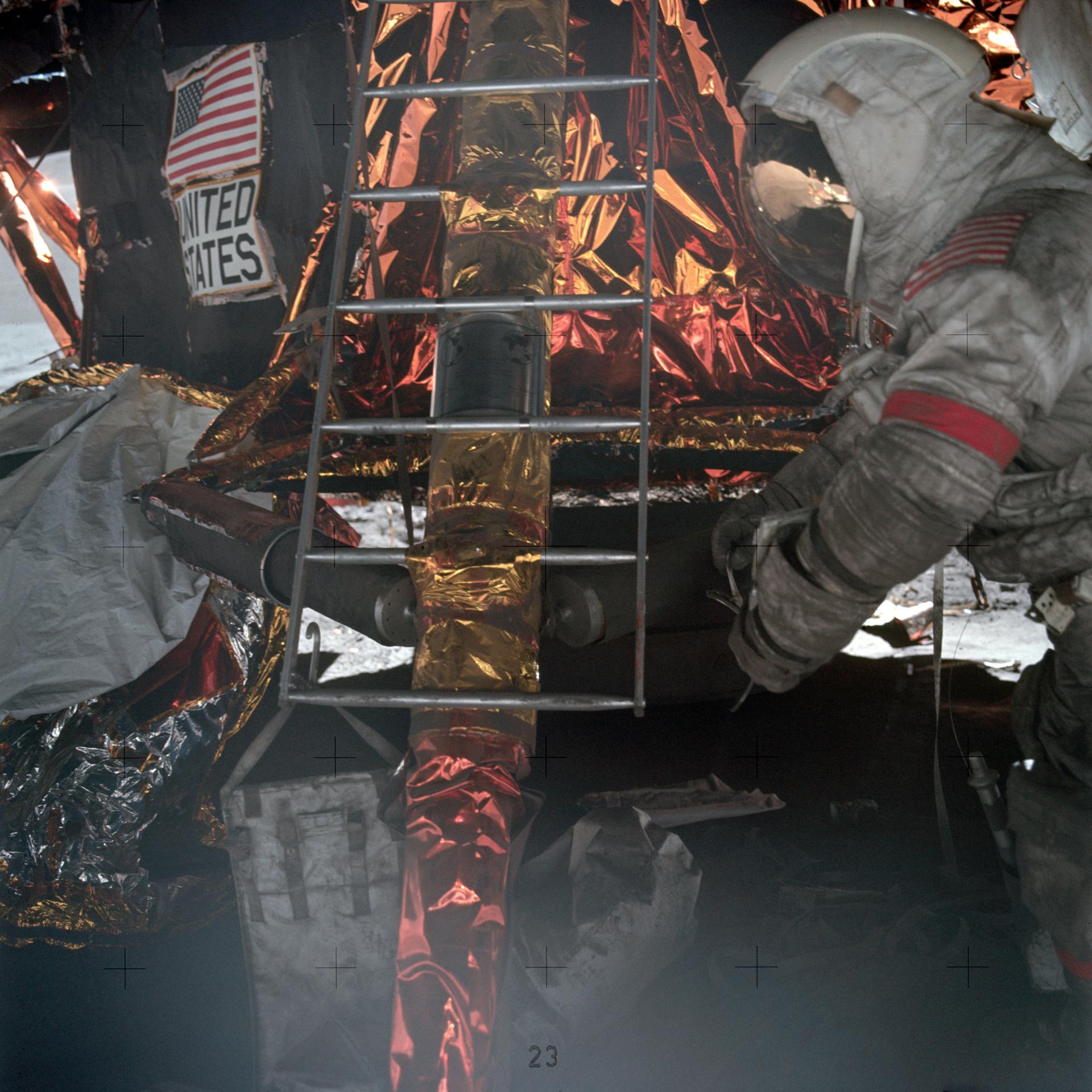
Measuring Moon Dust to Fight Air Pollution

NASA Mobilizes Resource for HBCU Scholars, Highlighted at Conference

Printed Engines Propel the Next Industrial Revolution

NASA Moon to Mars Architecture Art Challenge

15 Years Ago: Japan launches HTV-1, its First Resupply Mission to the Space Station

La NASA invita a los medios al lanzamiento de Europa Clipper

El X-59 de la NASA avanza en las pruebas de preparación para volar

La NASA invita a creadores de las redes sociales al lanzamiento de la misión Europa Clipper
Space communications: 7 things you need to know.
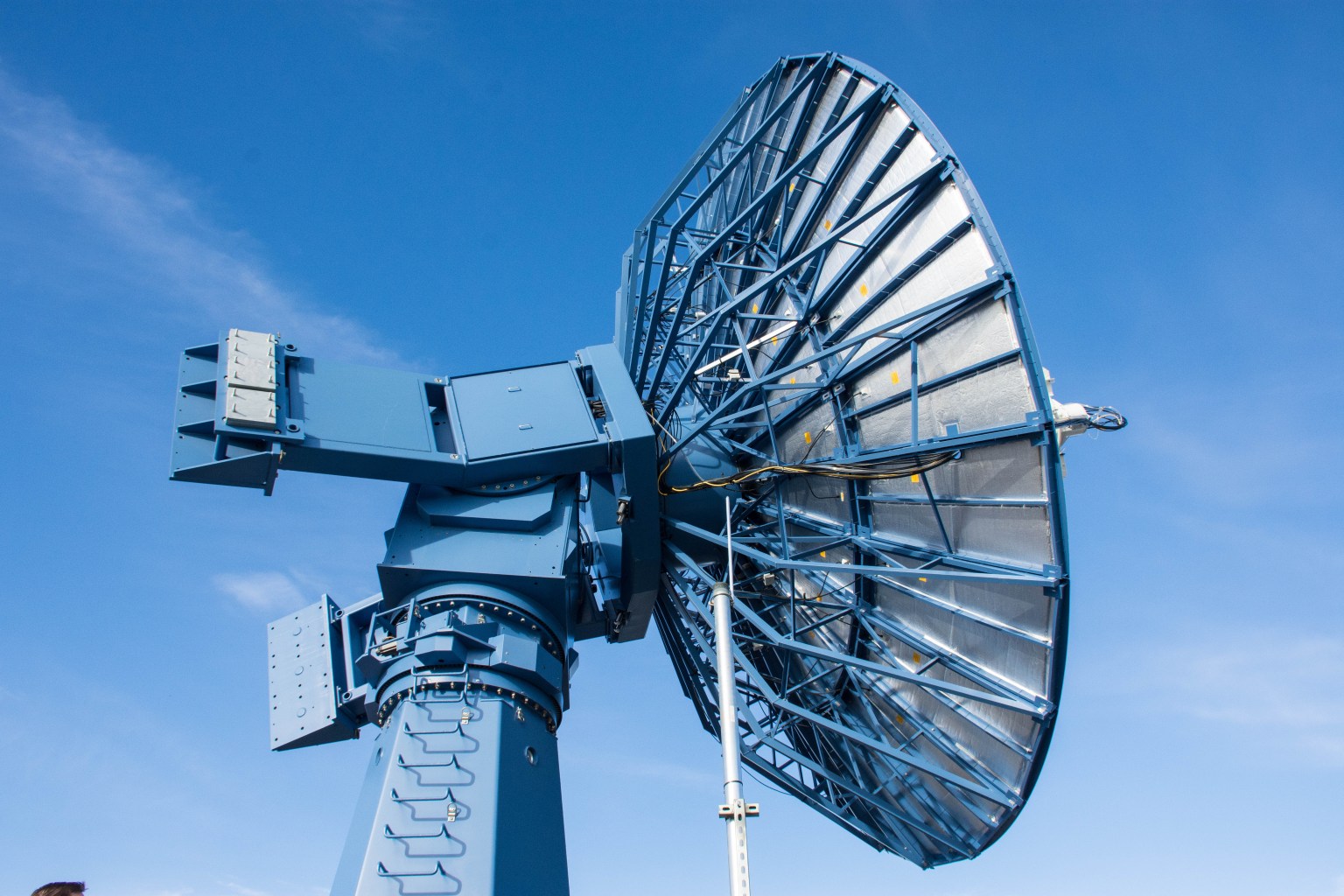
Katherine Schauer
1. the basics, 2. ground networks, 3. space relays, 4. bandwidth, 5. data rates, 6. latency, 7. interference.
Movies and television shows can make communicating with space look easy. Astronauts on far off planets video chat with loved ones on Earth with crystal clear quality and no delay.
Do these imagined communications capabilities match reality? Not really.
Communicating to and from space is a challenging endeavor. Fortunately, NASA has the experience and expertise to get space data to the ground.
NASA’s Space Communications and Navigation (SCaN) program enables this data exchange, whether it’s with astronauts aboard the International Space Station , rovers on Mars , or the Artemis missions to the Moon.
Let’s look at some of the challenges of space communications alongside the technologies and capabilities NASA uses to overcome them.
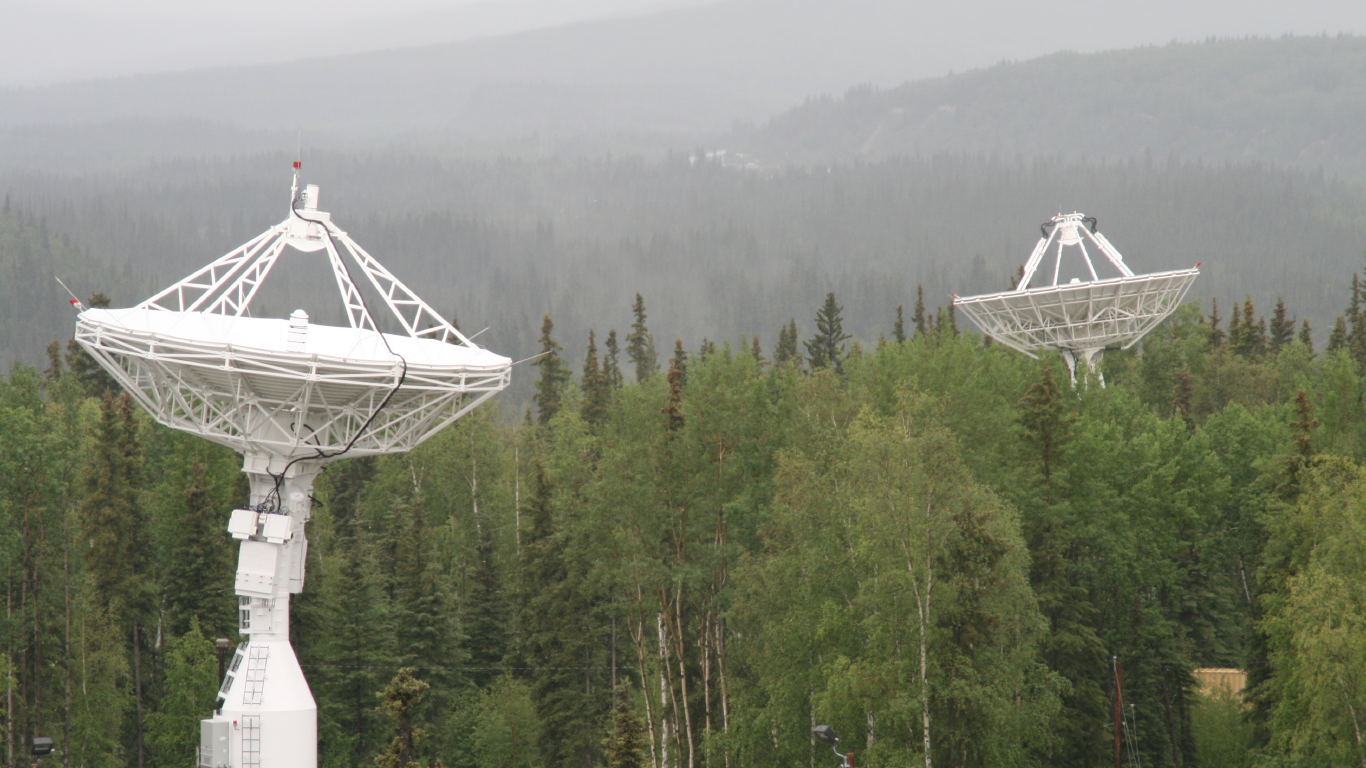
At its simplest, space communications relies on two things: a transmitter and a receiver. A transmitter encodes a message onto electromagnetic waves through modulation, which changes properties of the wave to represent the data. These waves flow through space toward the receiver. The receiver collects the electromagnetic waves and demodulates them, decoding the sender’s message.
Consider a Wi-Fi router and networked devices around the home. Each device receives signals from the router, which transmits data from the internet. At its heart, the complex task of communicating with space resembles wireless communications in the home – only on an enormous scale and at incredible distances.
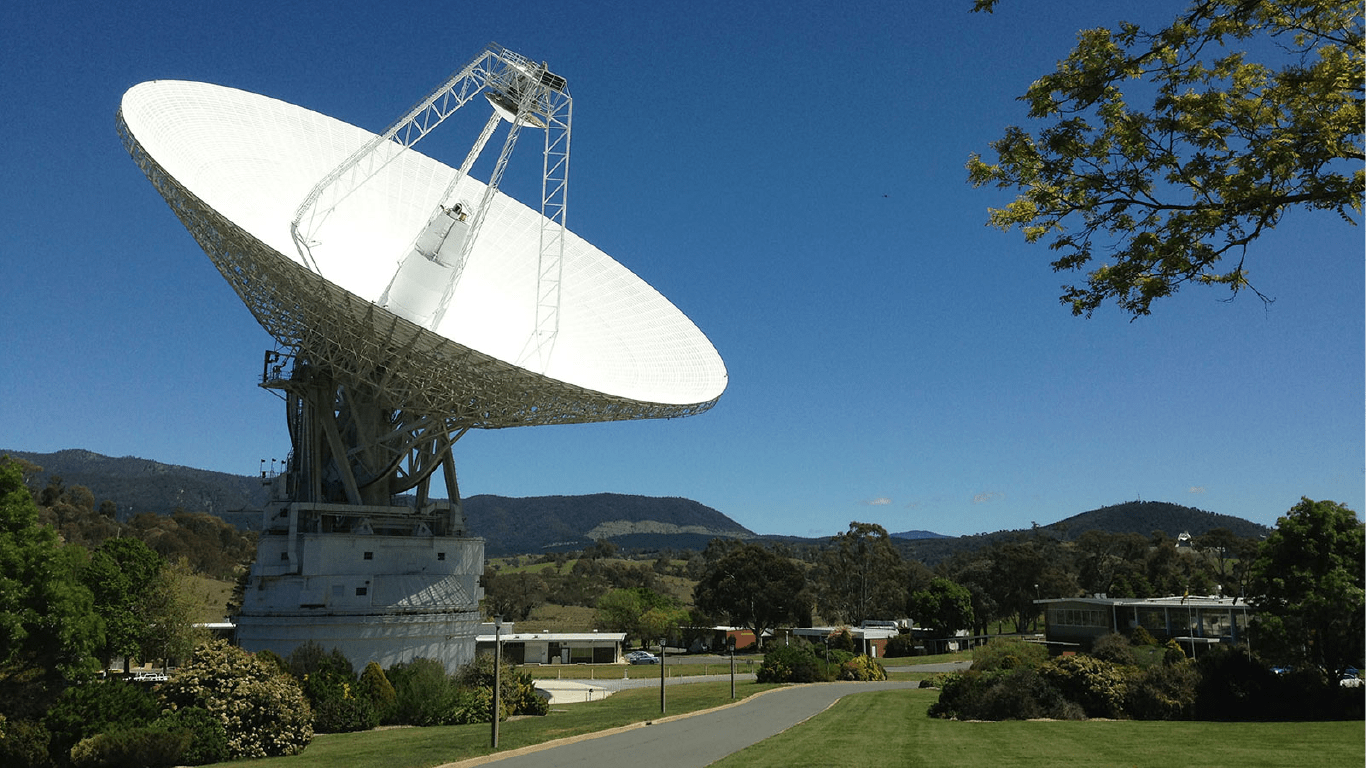
Communicating from space involves more than pointing a spacecraft’s antenna at the Earth. NASA has an extensive network of antennas around the globe — over all seven continents — to receive transmissions from spacecraft. Network engineers carefully plan communications between ground stations and missions, ensuring that antennas are ready to receive data as spacecraft pass overhead.
Ground station antennas range from the small very high frequency antennas that provide backup communications to the space station to a massive, 230-foot antenna that can communicate with far-off missions like the Voyager spacecraft , over 11 billion miles away.
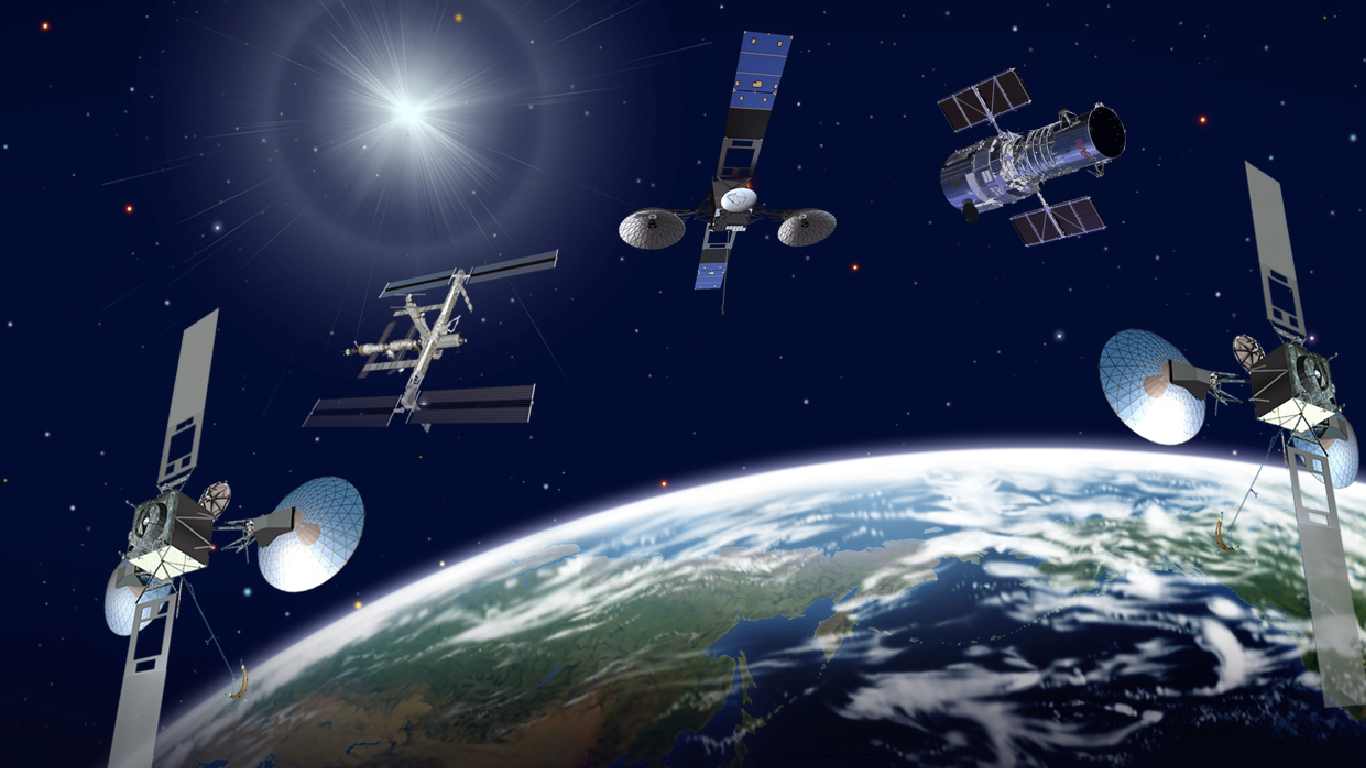
In addition to direct-to-Earth communications, many NASA missions rely on relay satellites in order to get their data to the ground. For example, the space station communicates through Tracking and Data Relay Satellites (TDRS), which transmit data to ground stations in New Mexico and Guam. The recently launched Mars 2020 Perseverance rover will send data through orbiters around Mars, which forward the data to Earth.
Relays offer unique advantages in terms of communications availability. For example, the placement of TDRS at three different regions above Earth offers global coverage and near-continuous communications between low-Earth orbit missions and the ground. Rather than waiting to pass over a ground station, TDRS users can relay data 24 hours a day, seven days a week.
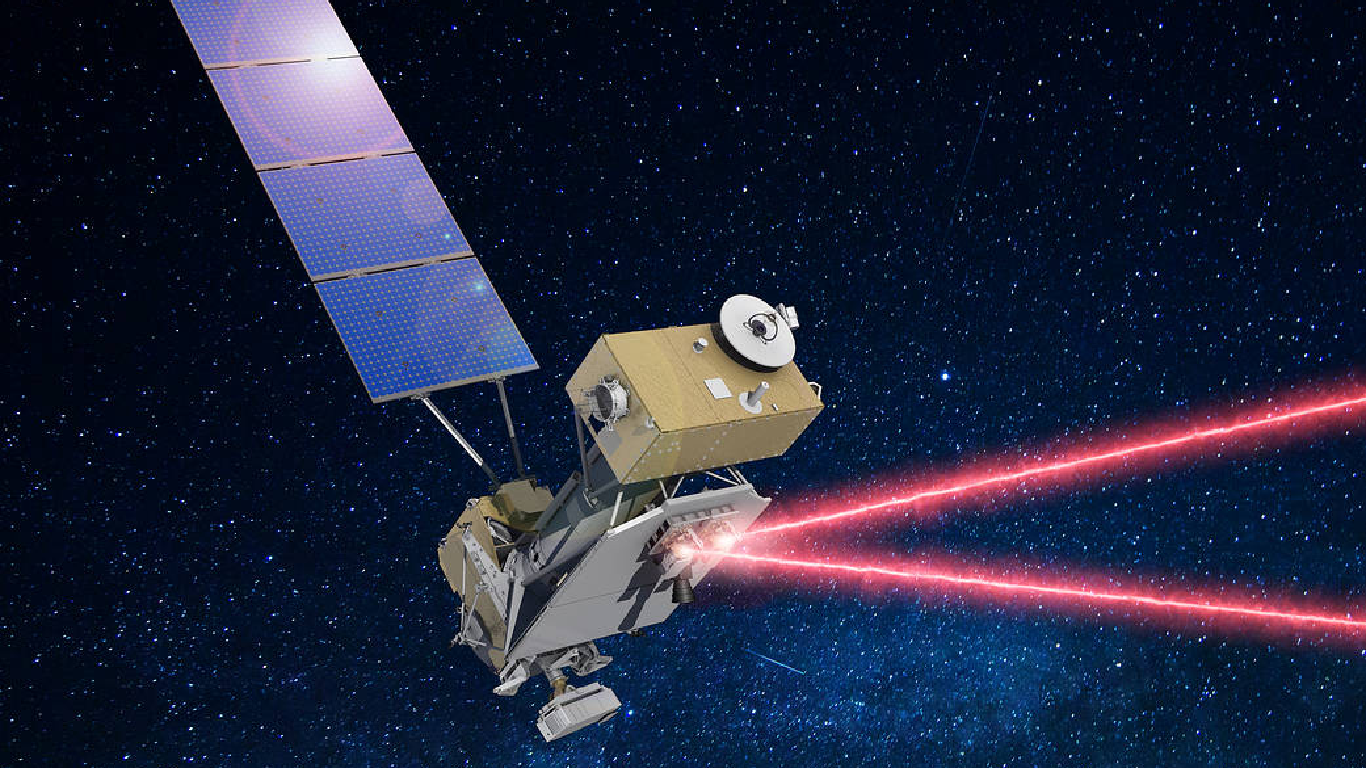
NASA encodes data on various bands of electromagnetic frequencies. These bandwidths — ranges of frequencies — have different capabilities. Higher bandwidths can carry more data per second, allowing spacecraft to downlink data more quickly.
Currently, NASA relies primarily on radio waves for communications, but the agency is developing ways to communicate with infrared lasers . This type of transmission — dubbed optical communications — will offer missions higher data rates than ever before.
NASA’s Laser Communications Relay Demonstration (LCRD) will showcase the benefits of optical communications. The mission will relay data between ground stations in California and Hawaii over optical links, testing their capabilities. NASA will also furnish the space station with an optical terminal that can relay data to the ground via LCRD.
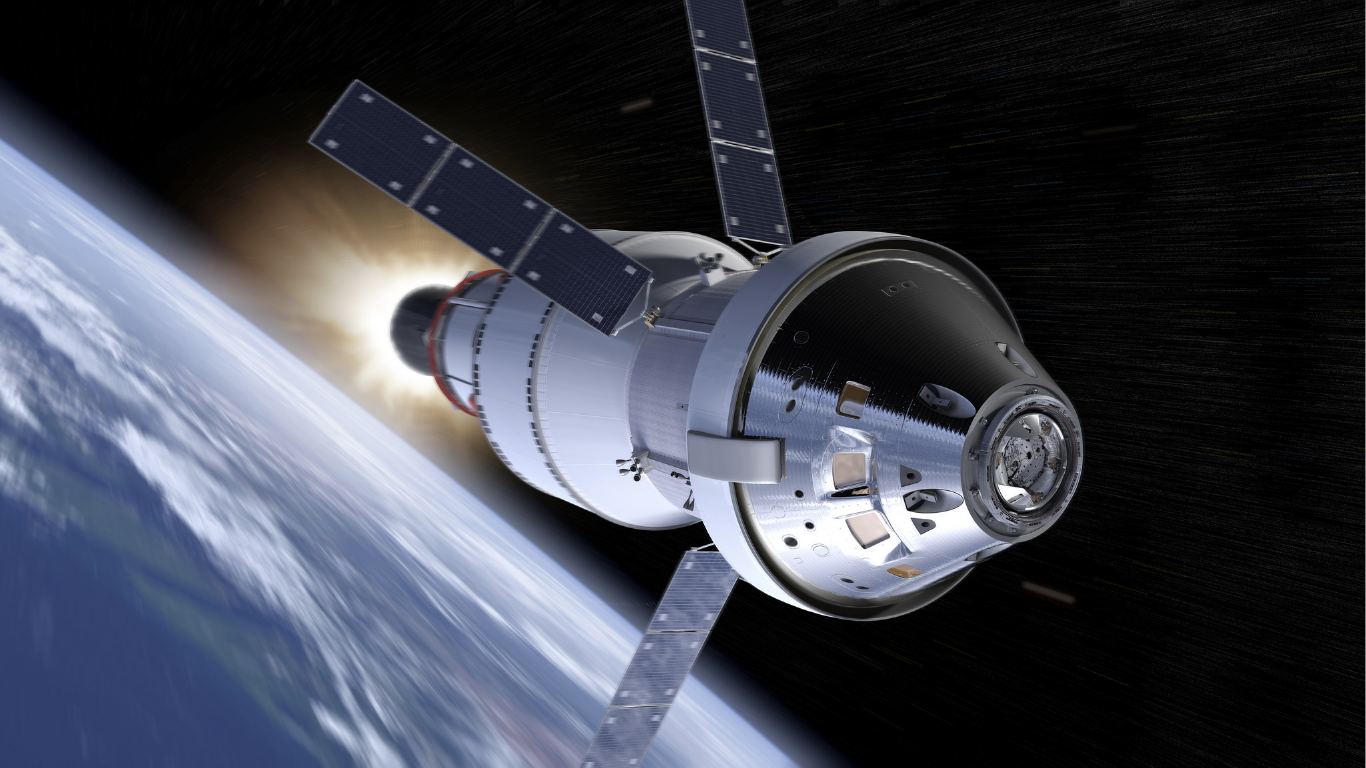
Higher bandwidths can mean higher data rates for missions. Apollo radios sent grainy black and white video from the Moon. An upcoming optical terminal on the Artemis II mission will send 4K, ultra-high definition video from lunar orbit.
But bandwidth isn’t the only constraint on data rates. Other factors that can affect data rates include the distance between the transmitter and receiver, the size of the antennas or optical terminals they use, and the power available on either end. NASA communications engineers must balance these variables in order to maximize data rates.
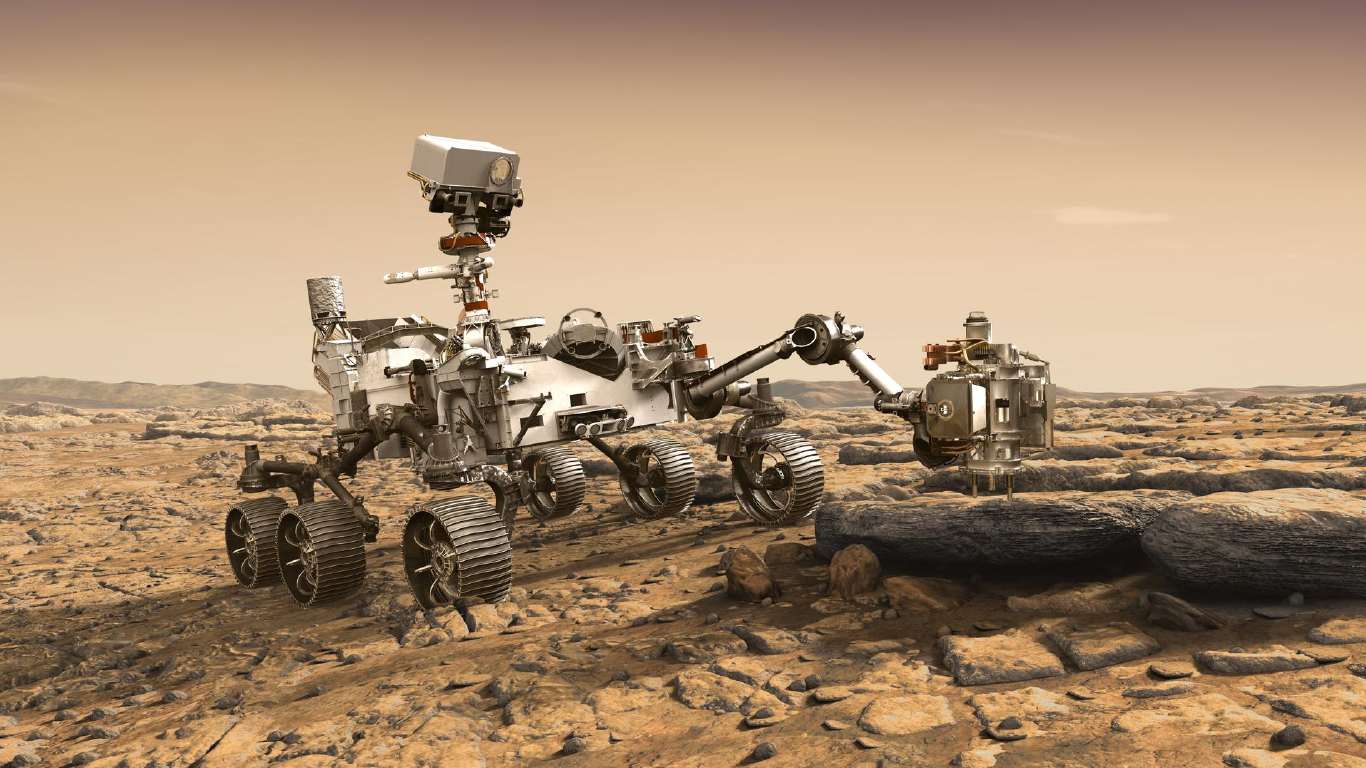
Communications don’t occur instantaneously. They’re bound by a universal speed limit: the speed of light, about 186,000 miles per second. For spacecraft close to Earth, this time delay — or communications latency — is almost negligible.
However, farther from Earth, latency can become a challenge. At Mars’ closest approach — about 35 million miles away — the delay is about four minutes. When the planets are at their greatest distance — about 250 million miles away — the delay is around 24 minutes. This means that astronauts would need to wait between four and 24 minutes for their messages to reach mission control, and another four to 24 minutes to receive a response.
As NASA prepares to send humans to the Red Planet , communications engineers are developing ways for astronauts to stay connected with Earth while recognizing delays will be a part of the conversation.
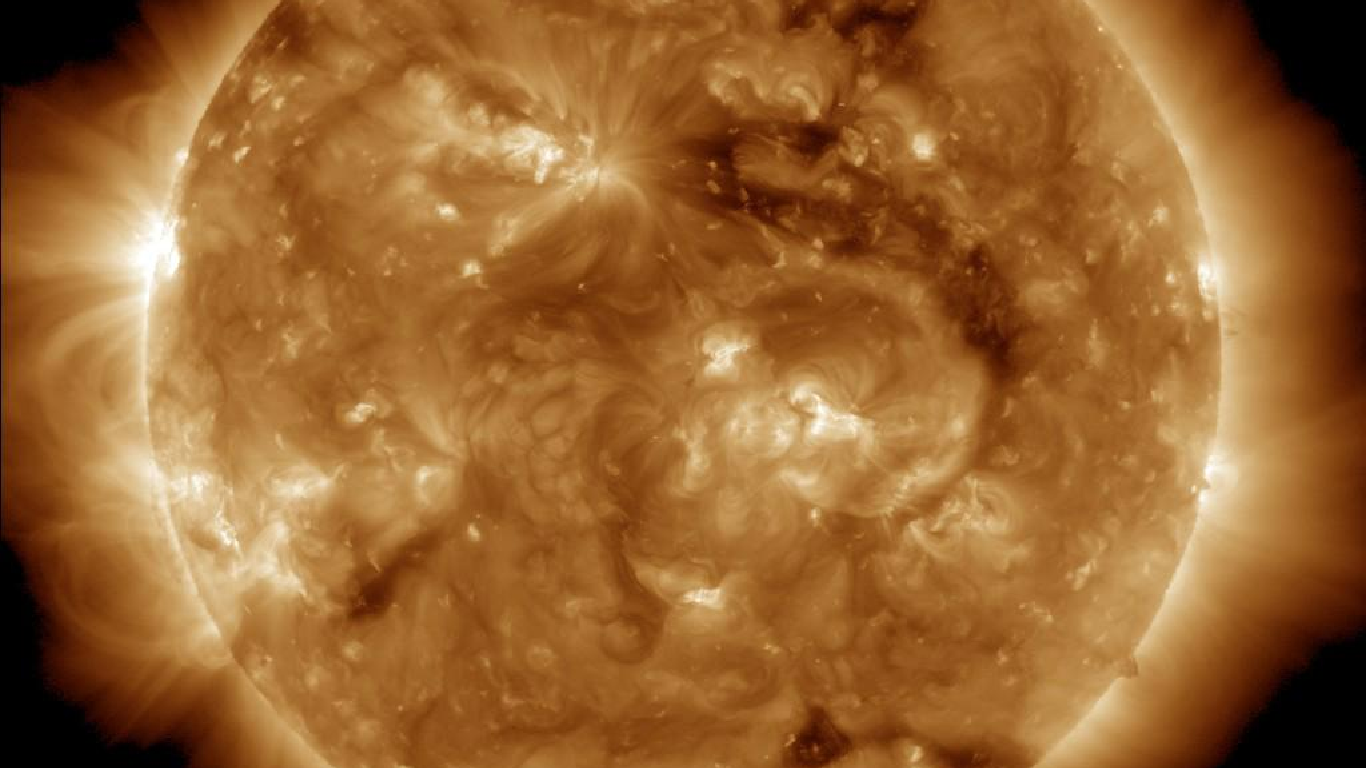
As communications transmissions travel over long distances or through the atmosphere, the quality of their data can deteriorate, garbling the message. Radiation from other missions, the Sun, or other celestial bodies can also interfere with the quality of transmissions. To make sure that mission operations centers receive accurate data, NASA uses methods of error detection and correction. Methods of error correction include computer algorithms that interpret noisy transmissions as usable data.
While Hollywood dreams up stories that connect people across the galaxy with ease, NASA engineers endeavor to turn those dreams into reality. NASA is developing technologies and capabilities that address the real-world challenges of space communications, while empowering science and exploration missions with robust communications services.
Explore More

New NASA research reveals a process to generate extremely accurate eclipse maps, which plot the…

Smile for the camera! An interaction between an elliptical galaxy and a spiral galaxy, collectively…

Here on Earth, it might not matter if your wristwatch runs a few seconds slow.…

Why isn’t there any sound in space? An astronomer explains why in space no one can hear you scream
University Distinguished Professor of Astronomy, University of Arizona
Disclosure statement
Chris Impey receives funding from the National Science Foundation.
University of Arizona provides funding as a member of The Conversation US.
View all partners

Curious Kids is a series for children of all ages. If you have a question you’d like an expert to answer, send it to [email protected] .
How far can sound travel through space, since it’s so empty? Is there an echo in space? – Jasmine, age 14, Everson, Washington
In space, no one can hear you scream.
You may have heard this saying. It’s the tagline from the famous 1979 science fiction movie “ Alien .” It’s a scary thought, but is it true? The simple answer is yes, no one can hear you scream in space because there is no sound or echo in space.
I’m a professor of astronomy , which means I study space and how it works. Space is silent – for the most part.
How sound works
To understand why there’s no sound in space, first consider how sound works. Sound is a wave of energy that moves through a solid, a liquid or a gas.
Sound is a compression wave . The energy created when your vocal cords vibrate slightly compresses the air in your throat, and the compressed energy travels outward.
A good analogy for sound is a Slinky toy . If you stretch out a Slinky and push hard on one end, a compression wave travels down the Slinky.
When you talk, your vocal cords vibrate. They jostle air molecules in your throat above your vocal cords, which in turn jostle or bump into their neighbors, causing a sound to come out of your mouth.
Sound moves through air the same way it moves through your throat. Air molecules near your mouth bump into their neighbors, which in turn bump into their neighbors, and the sound moves through the air. The sound wave travels quickly , about 760 miles per hour (1,223 kilometers per hour), which is faster than a commercial jet.
Space is a vacuum
So what about in space?
Space is a vacuum, which means it contains almost no matter. The word vacuum comes from the Latin word for empty .
Sound is carried by atoms and molecules. In space, with no atoms or molecules to carry a sound wave, there’s no sound. There’s nothing to get in sound’s way out in space, but there’s nothing to carry it, so it doesn’t travel at all. No sound also means no echo. An echo happens when a sound wave hits a hard, flat surface and bounces back in the direction it came from.
By the way, if you were caught in space outside your spacecraft with no spacesuit, the fact that no one could hear your cry for help is the least of your problems. Any air you still had in your lungs would expand because it was at higher pressure than the vacuum outside. Your lungs would rupture. In a mere 10 to 15 seconds , you’d be unconscious due to a lack of oxygen.
Sound in the solar system
Scientists have wondered how human voices would sound on our nearest neighboring planets, Venus and Mars. This experiment is hypothetical because Mars is usually below freezing , and its atmosphere is thin, unbreathable carbon dioxide . Venus is even worse – its air is hot enough to melt lead, with a thick carbon dioxide atmosphere.
On Mars, your voice would sound tinny and hollow, like the sound of a piccolo . On Venus , the pitch of your voice would be much deeper, like the sound of a booming bass guitar. The reason is the thickness of the atmosphere. On Mars the thin air creates a high-pitched sound, and on Venus the thick air creates a low-pitched sound. The team that worked this out simulated other solar system sounds , like a waterfall on Saturn’s moon Titan.
Deep space sounds
While space is a good enough vacuum that normal sound can’t travel through it, it’s actually not a perfect vacuum, and it does have some particles floating through it.
Beyond the Earth and its atmosphere, there are five particles in a typical cubic centimeter – the volume of a sugar cube – that are mostly hydrogen atoms. By contrast, the air you are breathing is 10 billion billion (10 19) times more dense. The density goes down with distance from the Sun, and in the space between stars there are 0.1 particles per cubic centimeter. In vast voids between galaxies , it is a million times lower still – fantastically empty.
The voids of space are kept very hot by radiation from stars. The very spread-out matter found there is in a physical state called a plasma .
A plasma is a gas in which electrons are separated from protons. In a plasma, the physics of sound waves get complicated . Waves travel much faster in this low-density medium, and their wavelength is much longer.
In 2022, NASA released a spectacular example of sound in space . It used X-ray data to make an audible recording that represents the way a massive black hole stirs up plasma in the Perseus galaxy cluster, 250 million light years from Earth. The black hole itself emits no sound, but the diffuse plasma around it carries very long wavelength sound waves.
The natural sound is far too low a frequency for the human ear to hear, 57 octaves below middle C, which is the middle note on a piano and in the middle of the range of sound people can hear. But after raising the frequency to the audible range, the result is chilling – it’s the sound of a black hole growling in deep space.
Hello, curious kids! Do you have a question you’d like an expert to answer? Ask an adult to send your question to [email protected] . Please tell us your name, age and the city where you live.
And since curiosity has no age limit – adults, let us know what you’re wondering, too. We won’t be able to answer every question, but we will do our best.
- Astrophysics
- Curious Kids
- Curious Kids US
- Vocal cords
Lecturer / Senior Lecturer in Construction and Project Management

Lecturer in Strategy Innovation and Entrepreneurship (Education Focused) (Identified)

Research Fellow in Dynamic Energy and Mass Budget Modelling

Communications Director

University Relations Manager

IMAGES
VIDEO
COMMENTS
Sound waves cannot travel in the vacuum of space because there is no medium to transmit these mechanical waves. Classical waves transfer energy without transporting matter through the medium. Waves in a pond do not carry the water molecules from place to place; rather the wave's energy travels through the water, leaving the water molecules in ...
Gravitational waves travel at the speed of light (186,000 miles per second). These waves squeeze and stretch anything in their path as they pass by. A gravitational wave is an invisible (yet incredibly fast) ripple in space. We've known about gravitational waves for a long time. More than 100 years ago, a great scientist named Albert Einstein ...
seismic wave: A wave traveling through the ground produced by an earthquake or some other means. sound wave: A wave that transmits sound. Sound waves have alternating swaths of high and low pressure. trough: (in physics) the bottom or low point in a wave. universe: The entire cosmos: All things that exist throughout space and time. It has been ...
All it takes is a little wiggling, which gravitational waves have in common with pretty much any other wave. If you wiggle around in water, you make water waves. If your voice box wiggles around ...
Electromagnetic Radiation. Electromagnetic radiation (radio waves, light, etc.) consists of interacting, self-sustaining electric and magnetic fields that propagate through empty space at 299,792 km per second (the speed of light, c), and slightly slower through air and other media. Thermonuclear reactions in the cores of stars (including the ...
In fact, gravitational waves travel at the speed of light: 186,000 miles per second! HOST PADI BOYD: If you want to study these fast-moving, space-rippling waves, you should probably aim your interest at cosmic objects whose gravity is really strong. [Song: Spotter Underscore by Coon and Goebel] Judy Racusin. I'm Dr. Judy Racusin.
What is Electromagnetic energy? Electromagnetic energy travels in waves and spans a broad spectrum from very long radio waves to very short gamma rays. The human eye can only detect only a small portion of this spectrum called visible light. A radio detects a different portion of the spectrum, and an x-ray machine uses yet another portion.
Gravitational waves are produced by masses moving through space-time in a special way. The simplest system that produces gravitational waves is two masses orbiting their common center of mass. One of the most common such system is a binary star system - two stars orbiting each other's common center of mass. It turns out that about half of the ...
Shock waves are not just terrestrial phenomena. Find out how they form and propagate in the vastness of space.
Sound waves are nothing but air vibrations. When these vibrations are in the range of 20 Hz to 20 kHz, we can hear them! Sound waves basically travel by vibrating the particles in a medium, i.e., molecules of air. These vibrations are passed on to consecutive particles in the medium, meaning that sound waves cannot travel without a medium.
Sound is carried by atoms and molecules. In space, with no atoms or molecules to carry a sound wave, there's no sound. There's nothing to get in sound's way out in space, but there's ...
0. Since, electro magnetic waves have electric and magnetic vector. Due to this EM waves show electric and magnetic field. An electric and magnetic field have no need a medium to show thier effect. Hence in the presence of electric and magnetic field vector which vibrate perpendeculer to each other and get pertervation EM waves travels in vacuum.
As Kiona Smith-Strickland explains at Gizmodo, sounds travel as molecules bump into each other, the same way that ripples spread out when you drop a stone into a pond: as the ripples get farther and farther away, the sound gradually loses its force, which is why we can only hear sounds generated near to us.As a sound wave passes, it causes oscillations in the air pressure, and the time between ...
Wow. Extent of human radio broadcasts Humans have been broadcasting radio waves into deep space for about a hundred years now, since the days of Marconi. That, of course, means there is an ever-expanding bubble announcing Humanity's presence to anyone listening in the Milky Way. This bubble is astronomically large (literally), and currently ...
Well, space is not in fact empty. It is filled with tenuous (and in some places not so tenuous) plasma. This plasma is much like our atmosphere and shock waves can in fact travel though it. Dr. Louis Barbier. (November 2001) Radio Signals in Space. We have learned that waves have to travel through a medium.
To the nearby receiver the signal is strong. But if the receiver is far away, the signal will become weaker and weaker until it becomes a noise. So the question is does the same happen in deep space and what distance radio signal (or any electromagnetic wave frequency) could travel until it becomes noise?
The electromagnetic spectrum is comprised of all frequencies of electromagnetic radiation that propagate energy and travel through space in the form of waves. Longer wavelengths with lower frequencies make up the radio spectrum. Shorter wavelengths with higher frequencies make up the optical spectrum. The portion of the spectrum that humans can ...
Light waves across the electromagnetic spectrum behave in similar ways. When a light wave encounters an object, they are either transmitted, reflected, absorbed, refracted, polarized, diffracted, or scattered depending on the composition of the object and the wavelength of the light. Specialized instruments onboard NASA spacecraft and airplanes collect data on how electromagnetic waves behave
Actually, radio waves travel very quickly through space. Radio waves are a kind of electromagnetic radiation, and thus they move at the speed of light. The speed of light is a little less than 300,000 km per second. At that speed, a beam of light could go around the Earth at the equator more then 7 times in a second. The reason that it takes so ...
1. The Basics. At its simplest, space communications relies on two things: a transmitter and a receiver. A transmitter encodes a message onto electromagnetic waves through modulation, which changes properties of the wave to represent the data. These waves flow through space toward the receiver. The receiver collects the electromagnetic waves ...
In space, with no atoms or molecules to carry a sound wave, there's no sound. There's nothing to get in sound's way out in space, but there's nothing to carry it, so it doesn't travel at ...